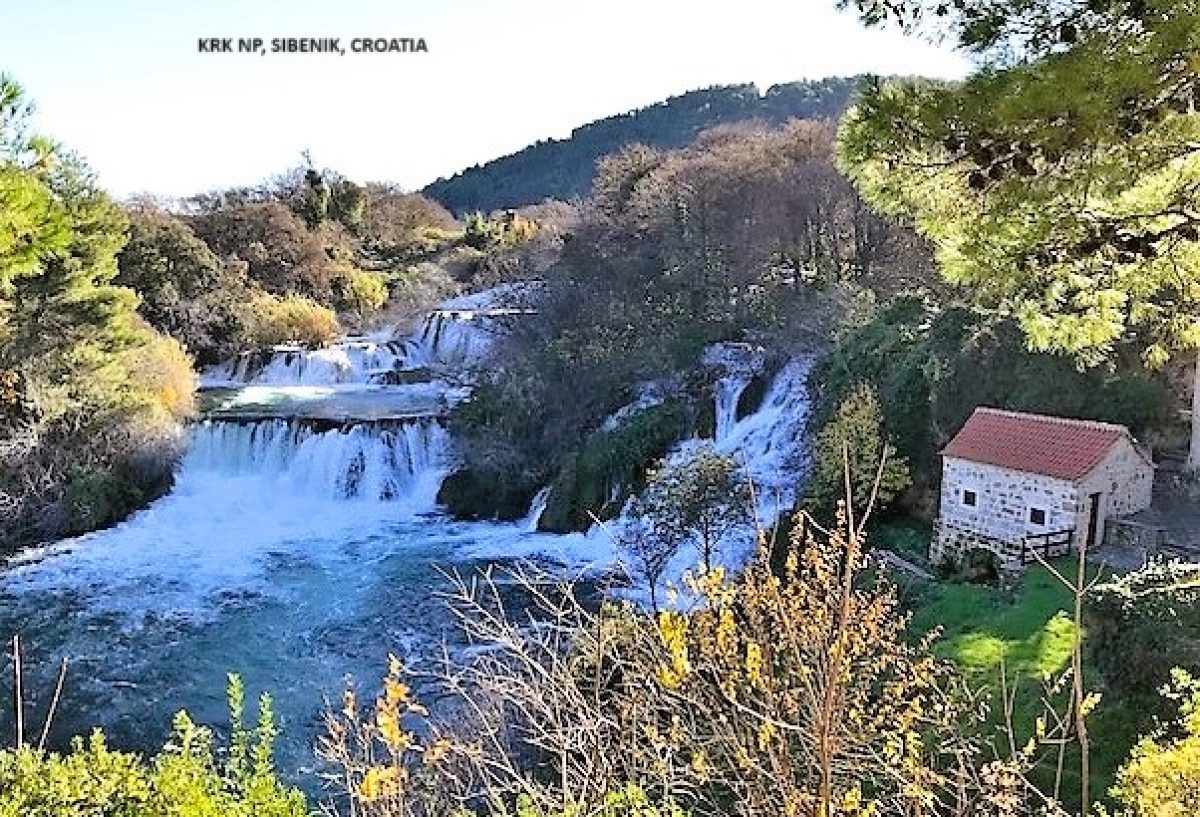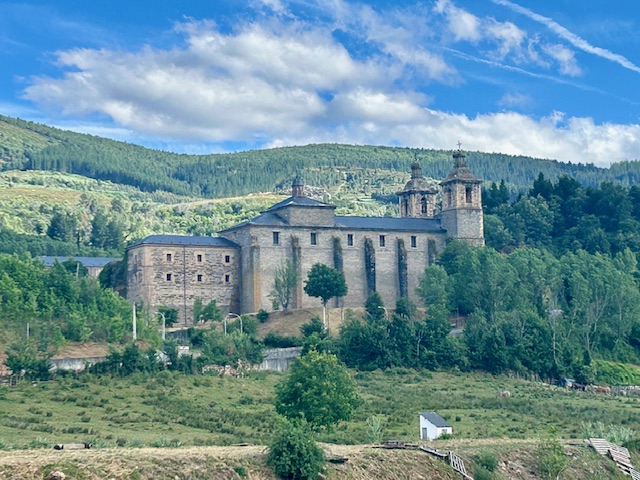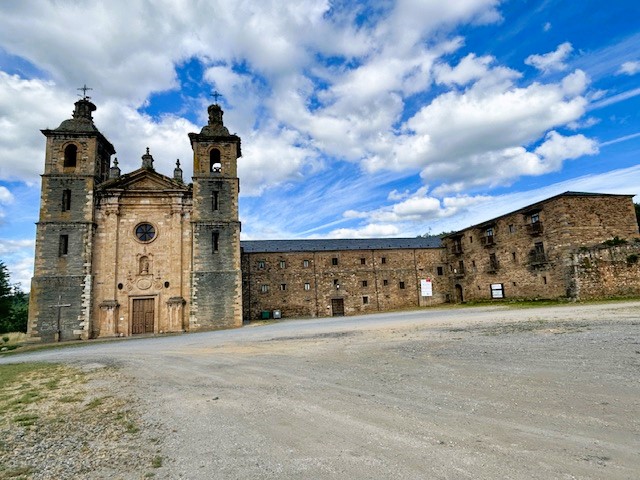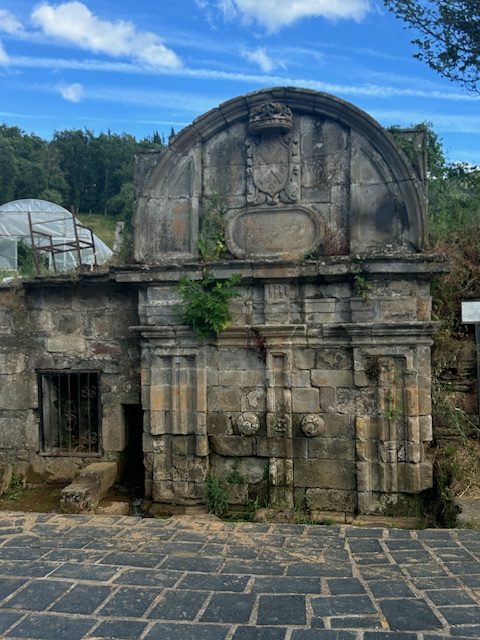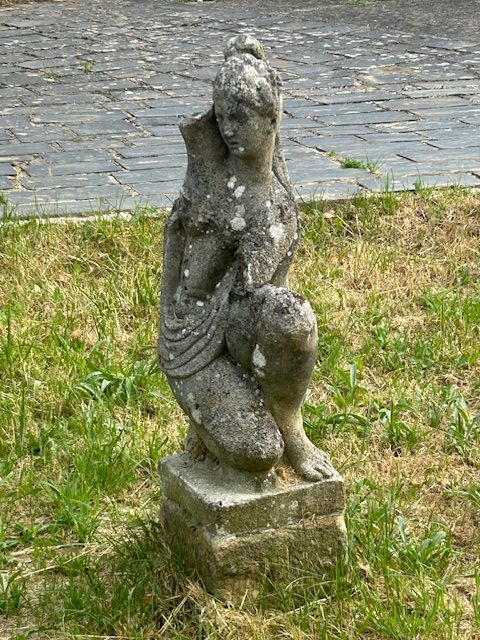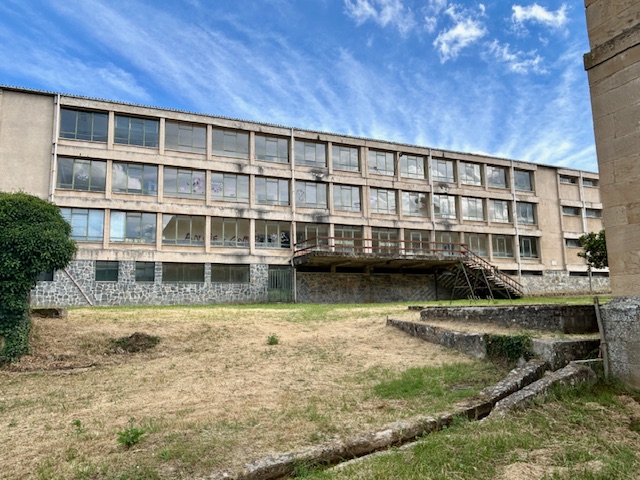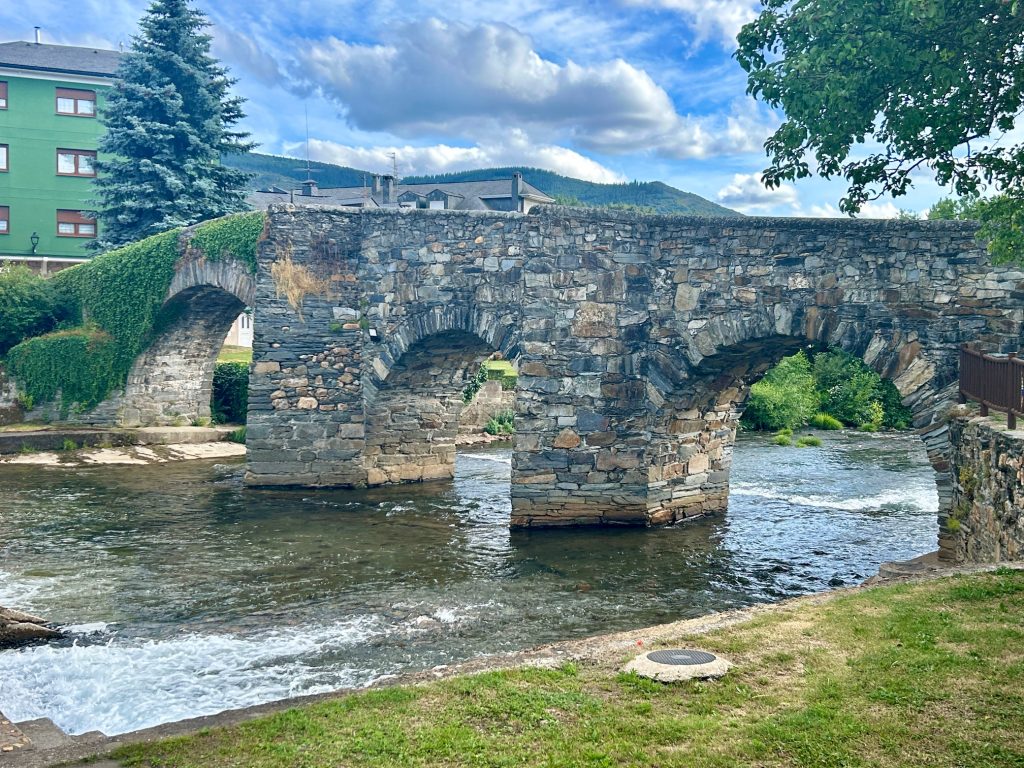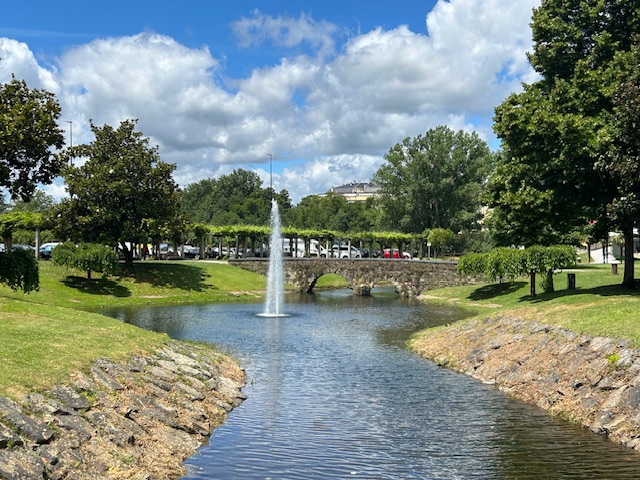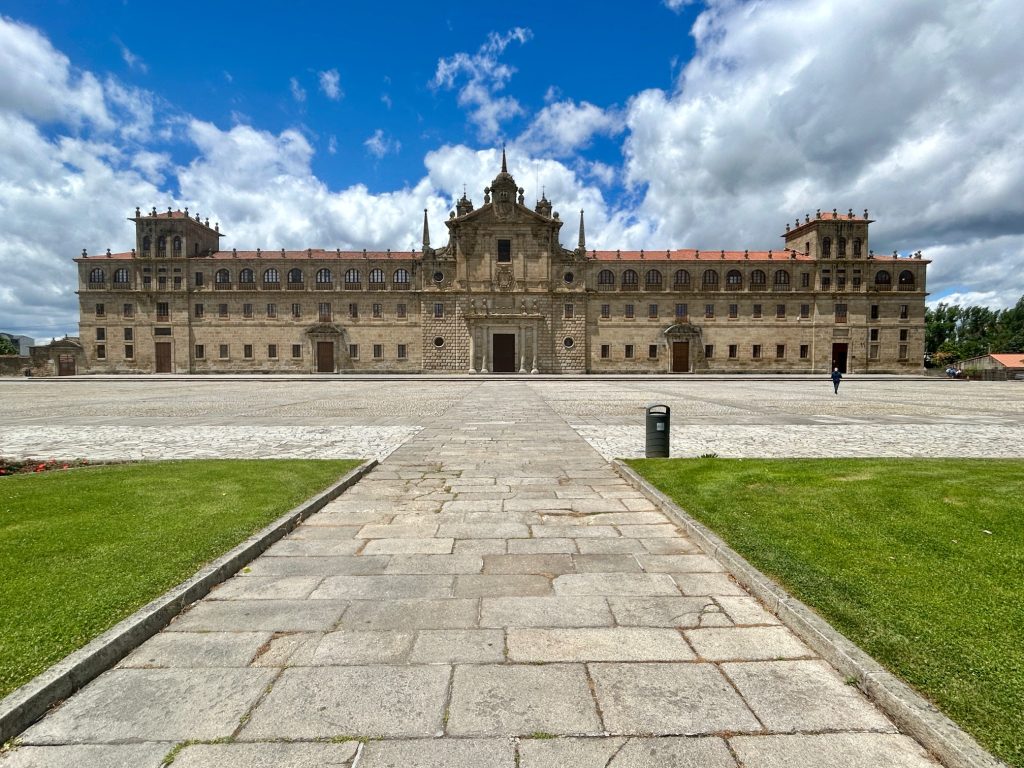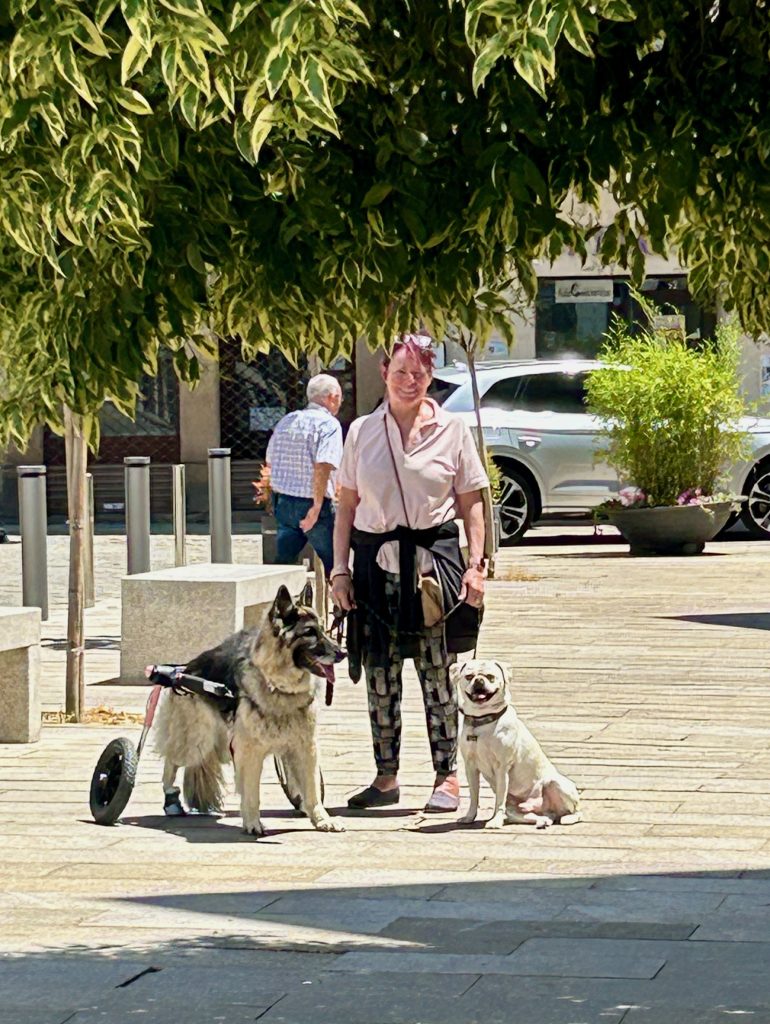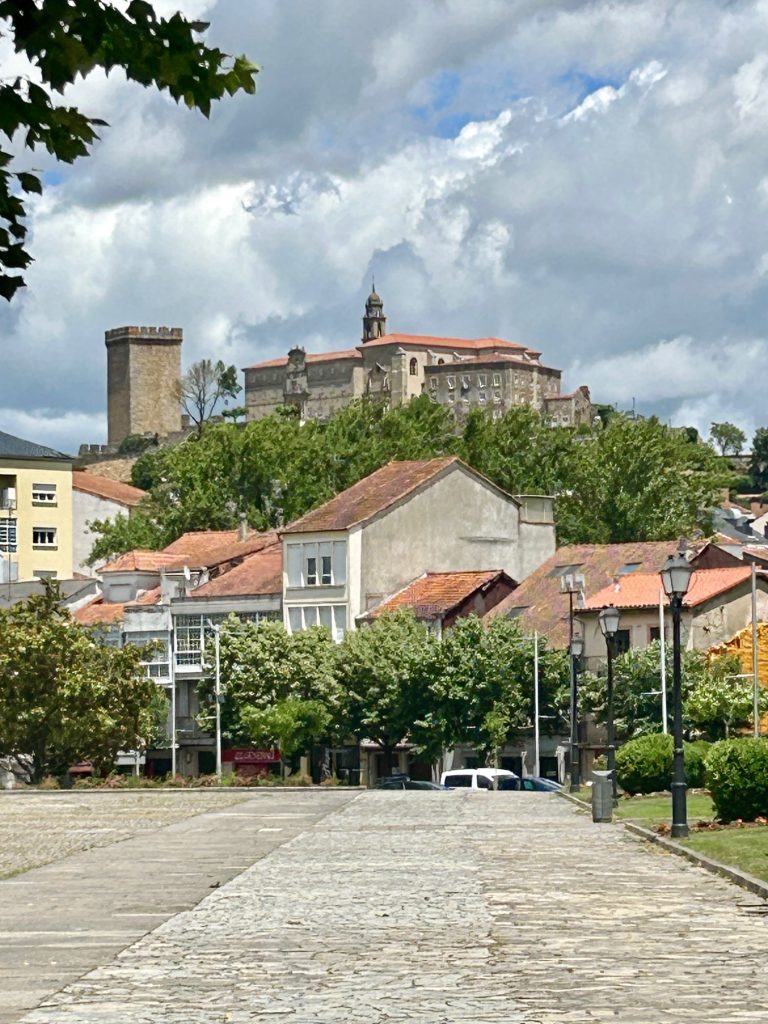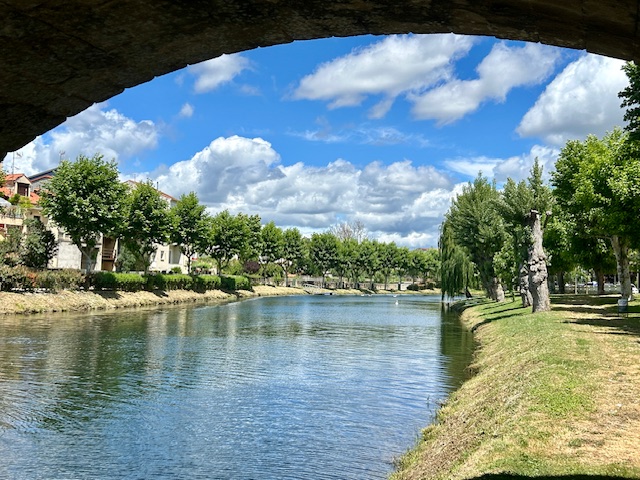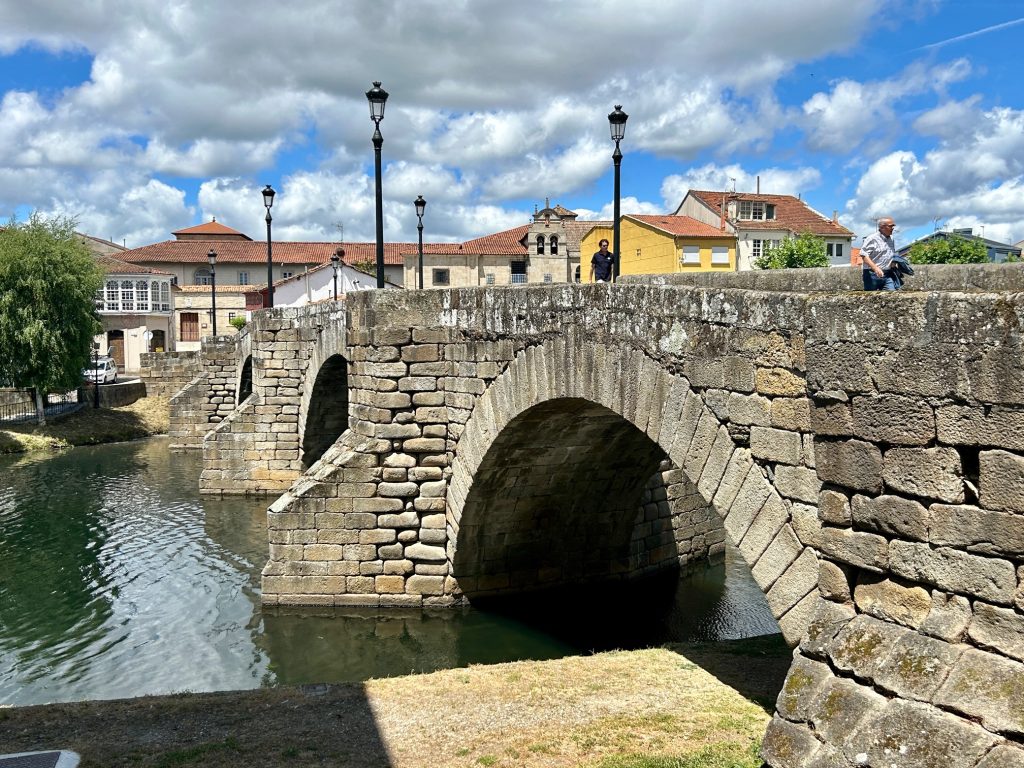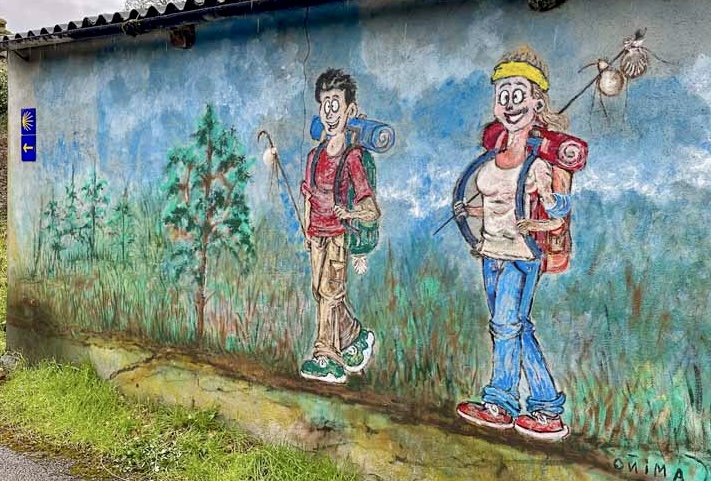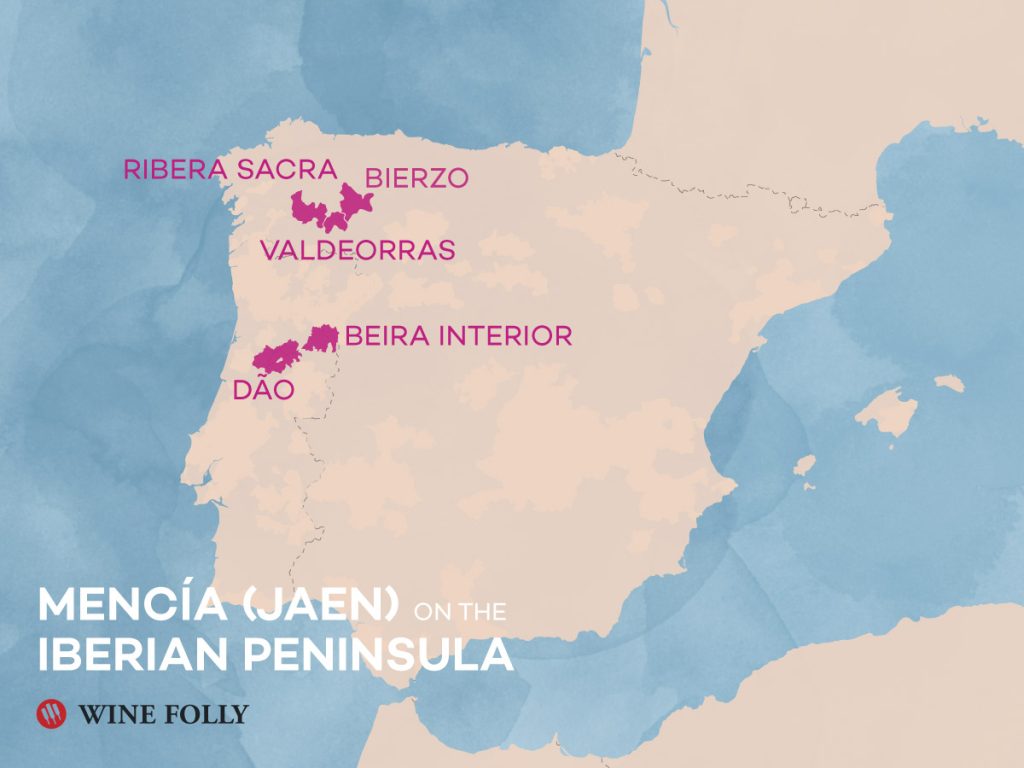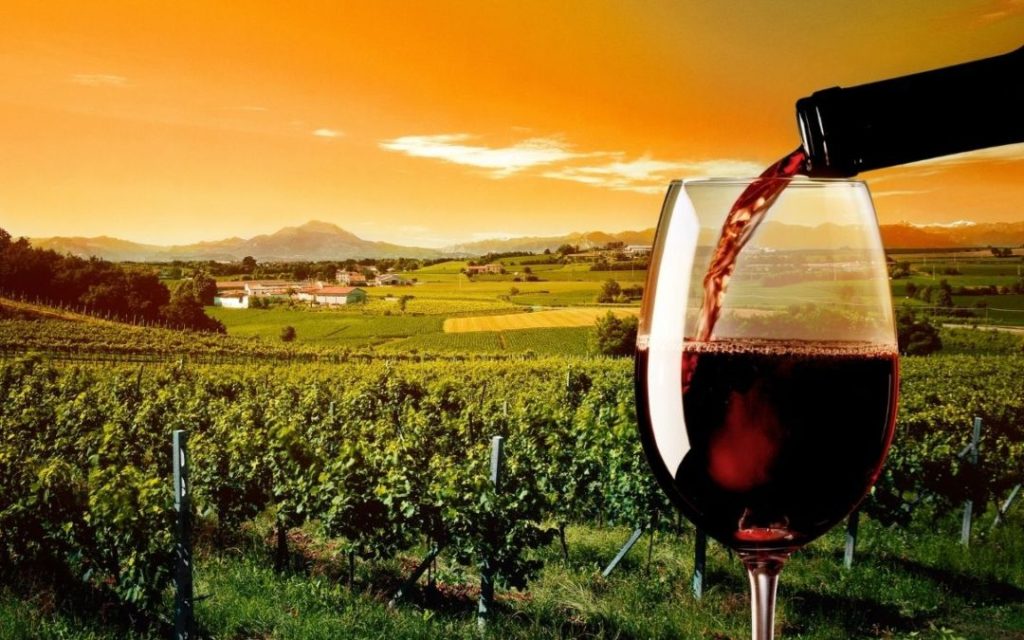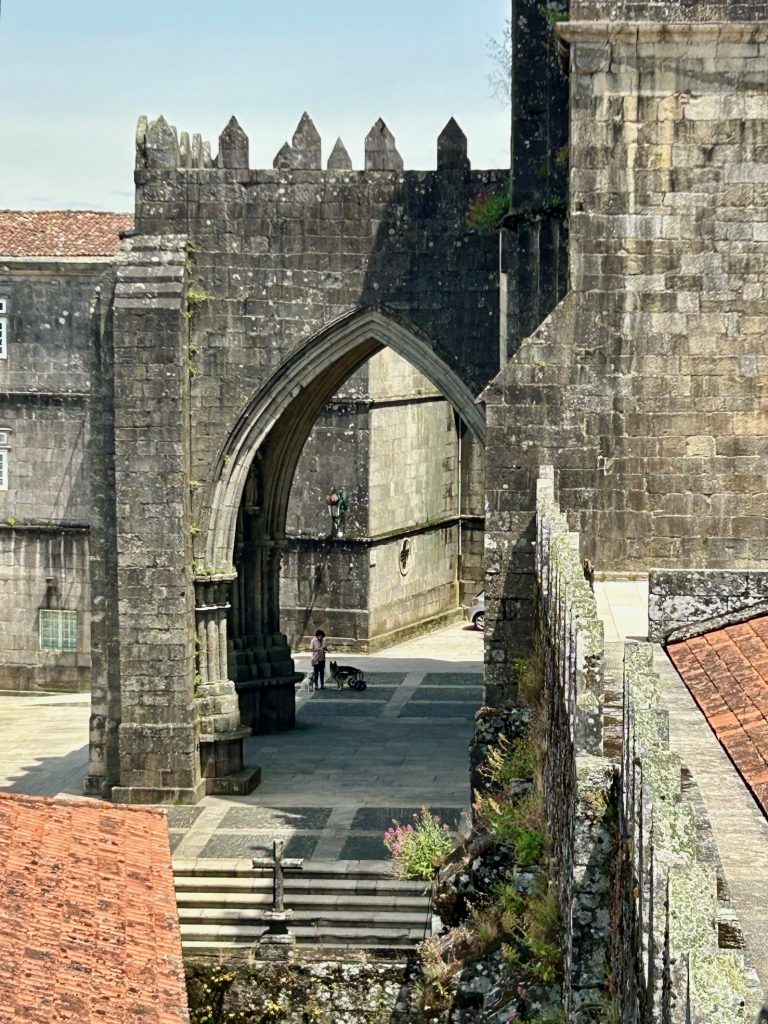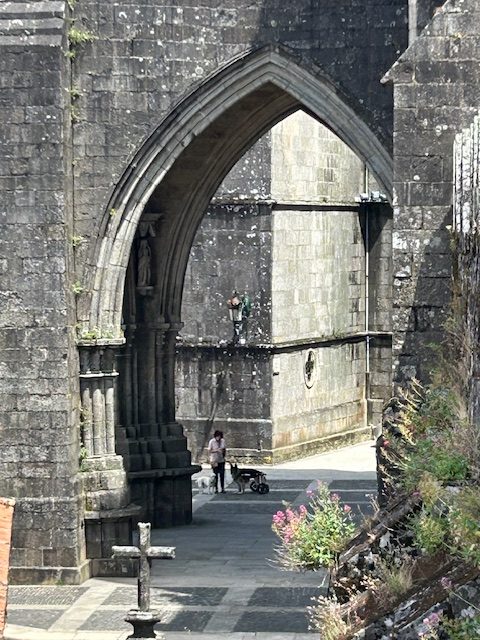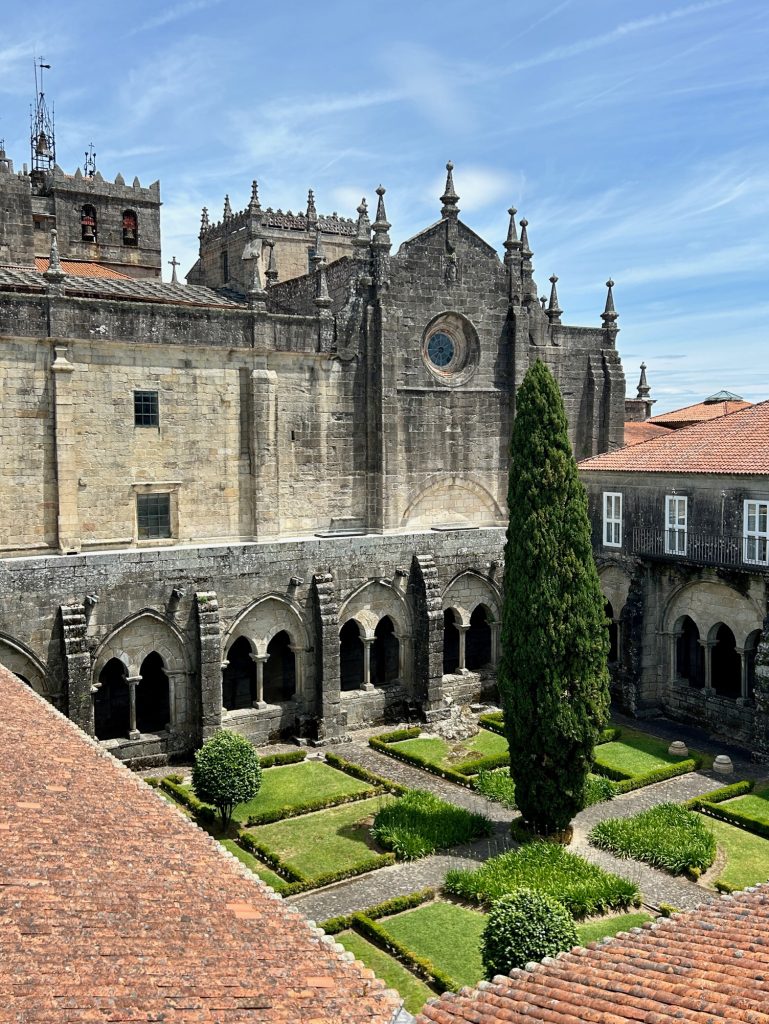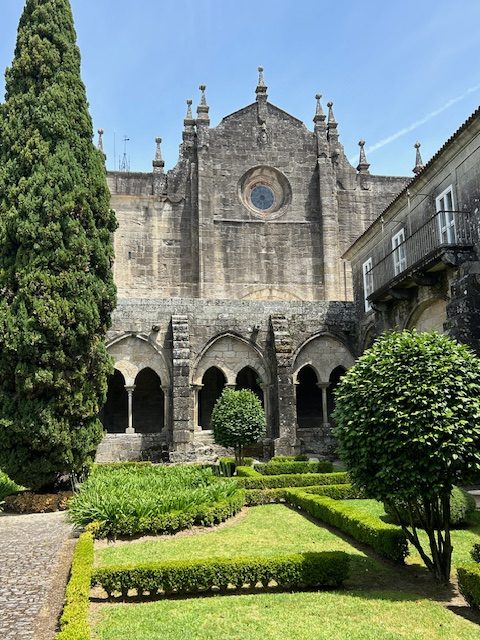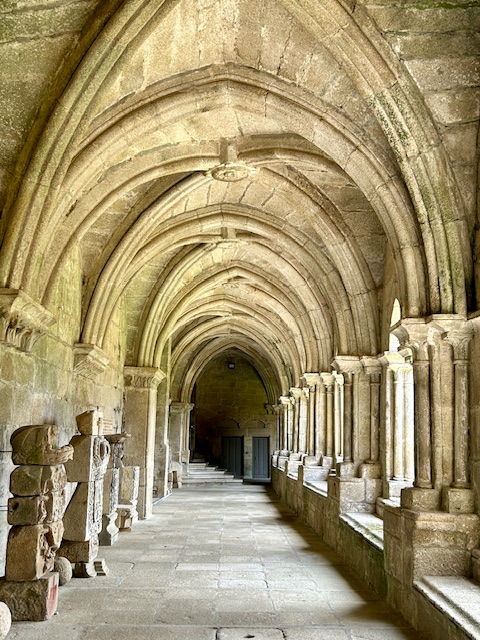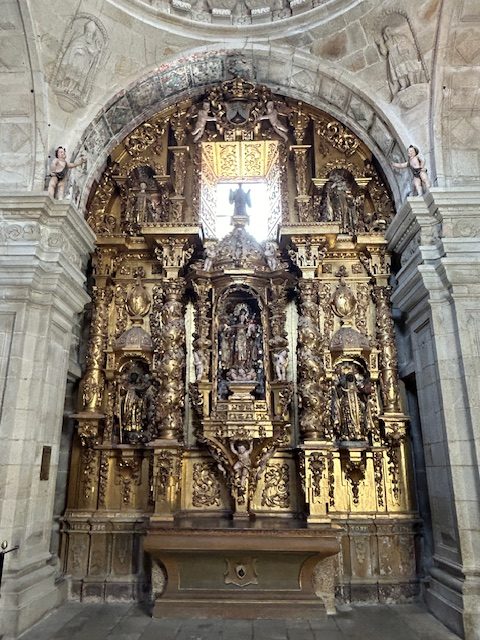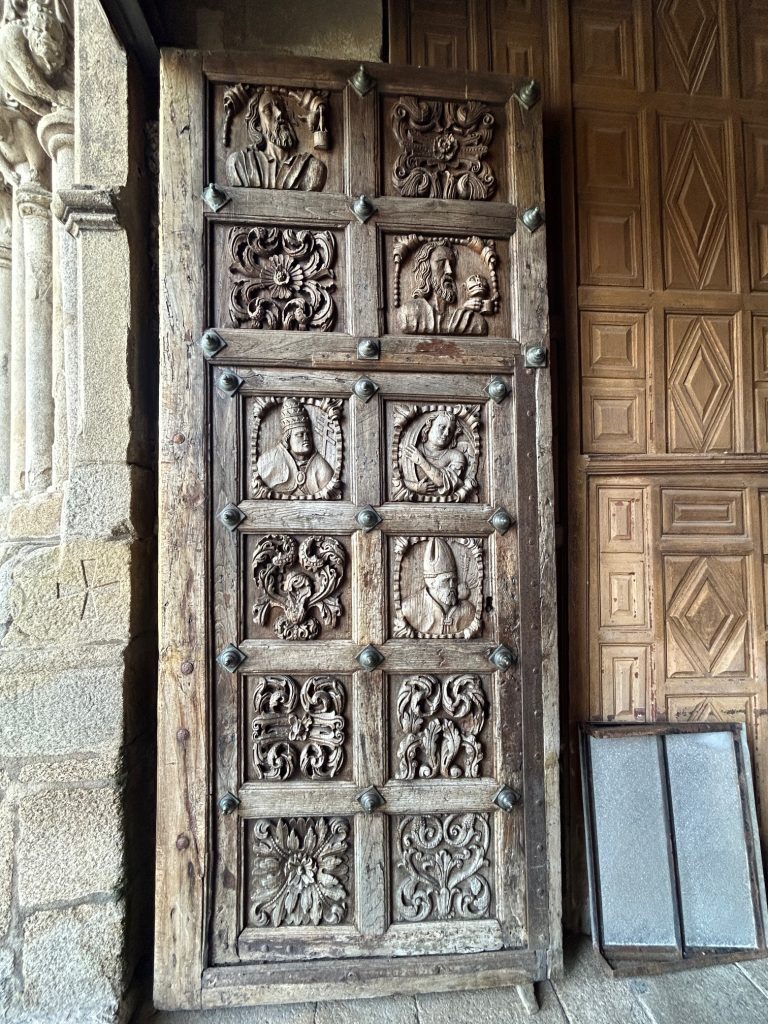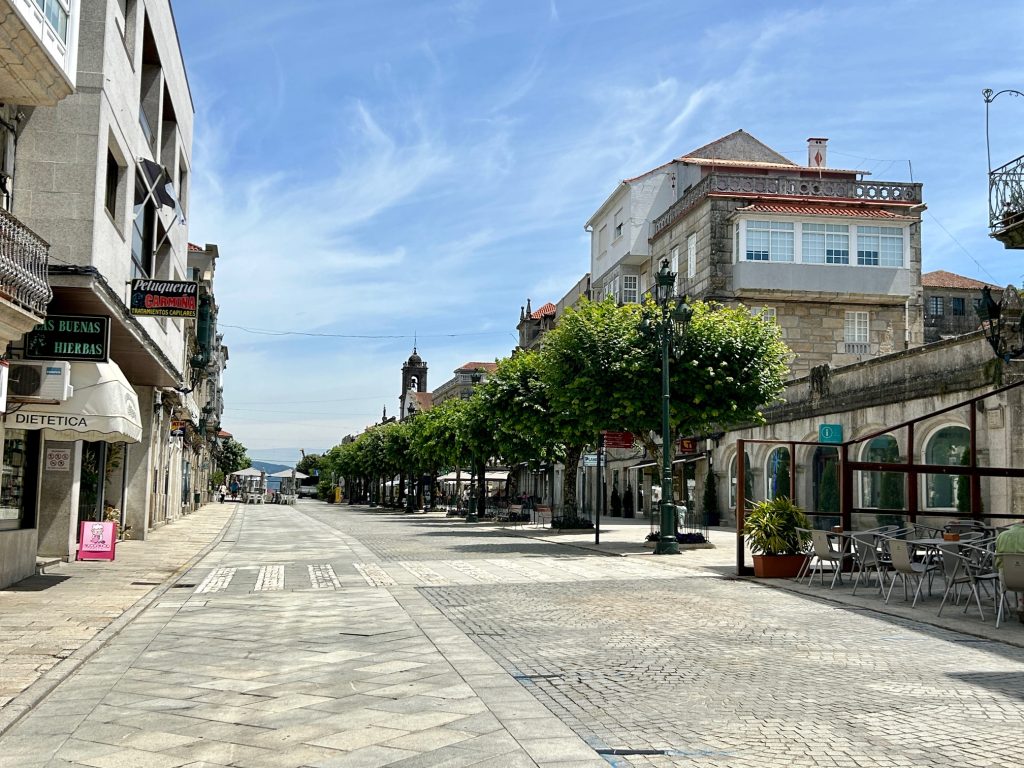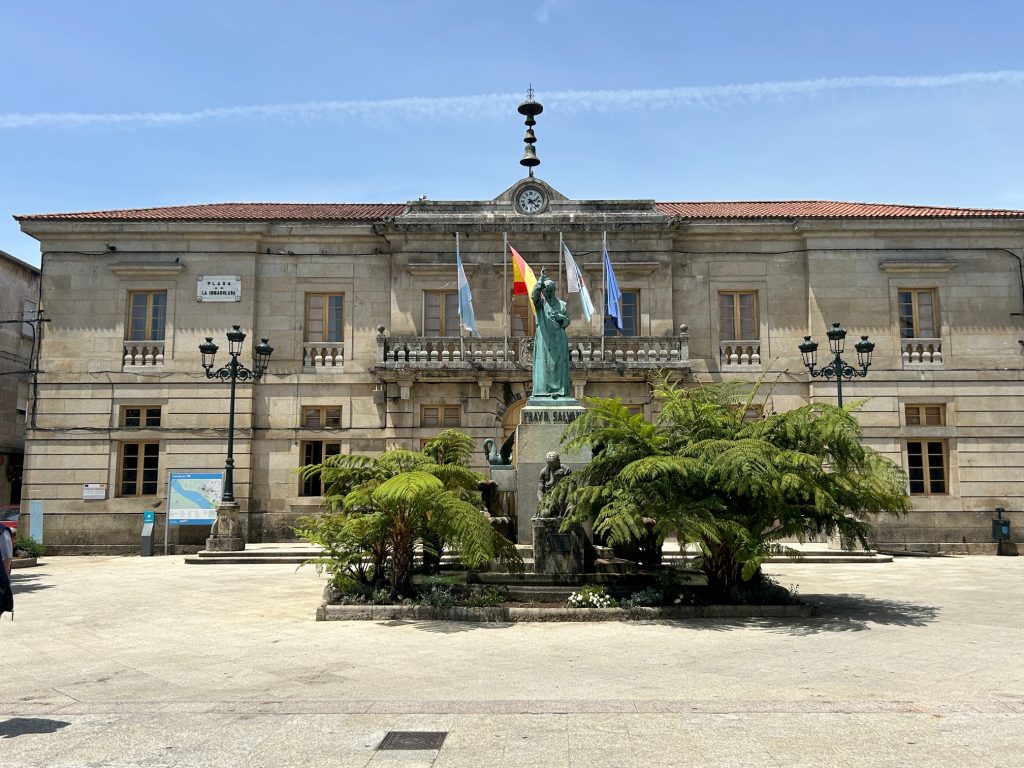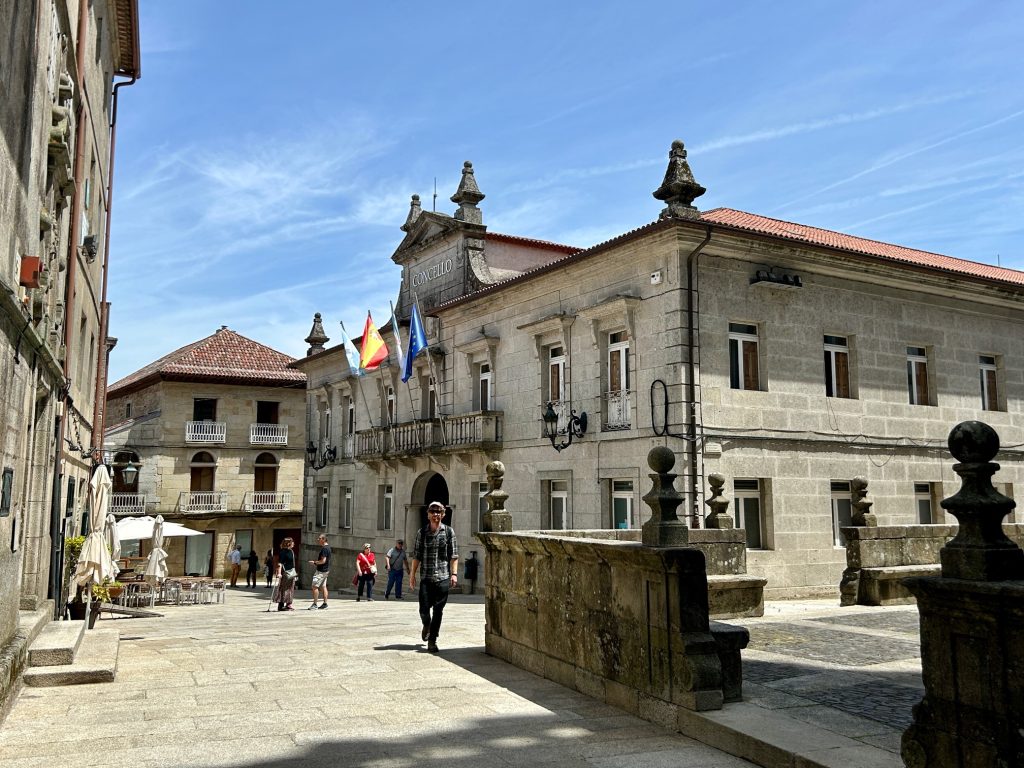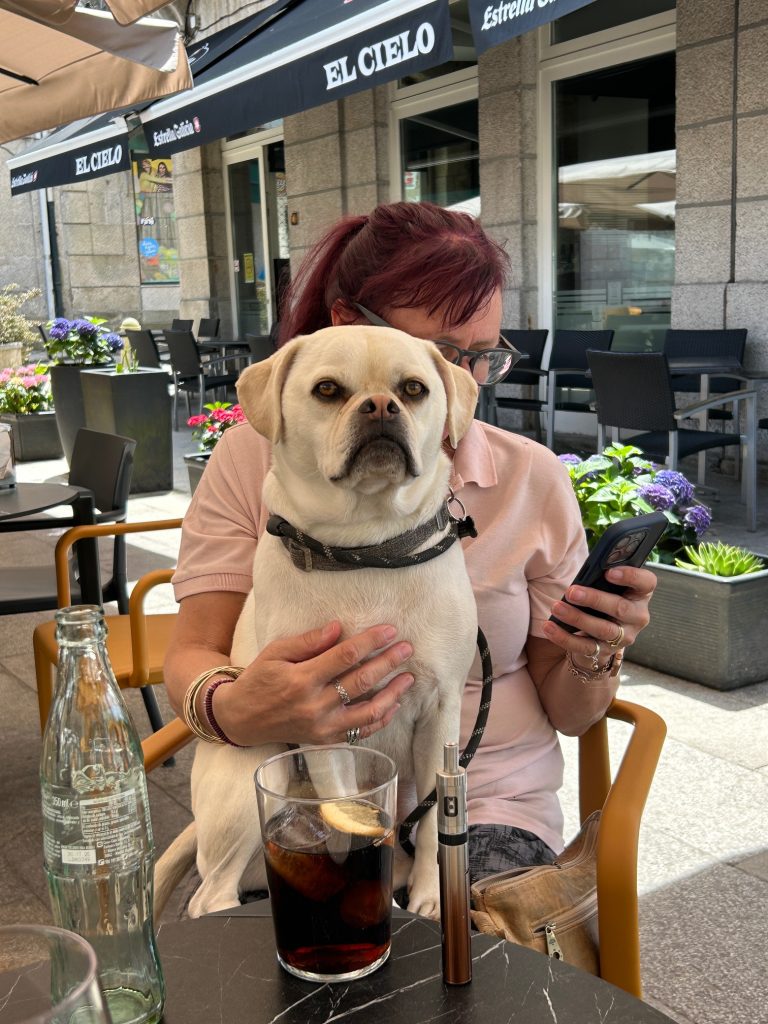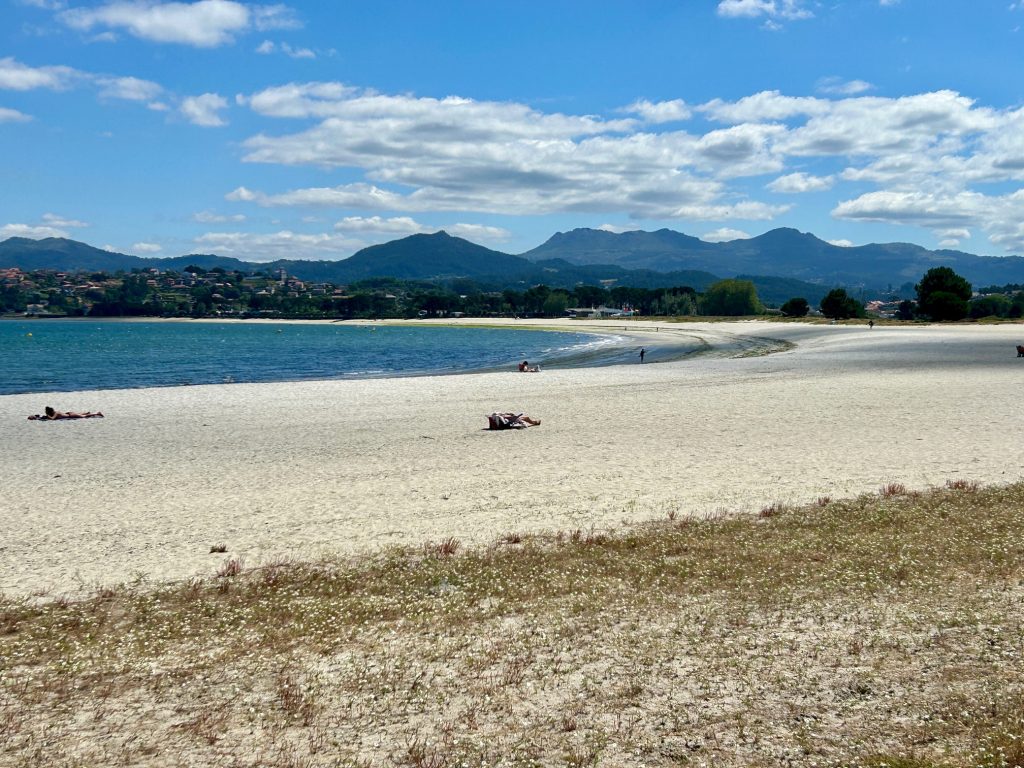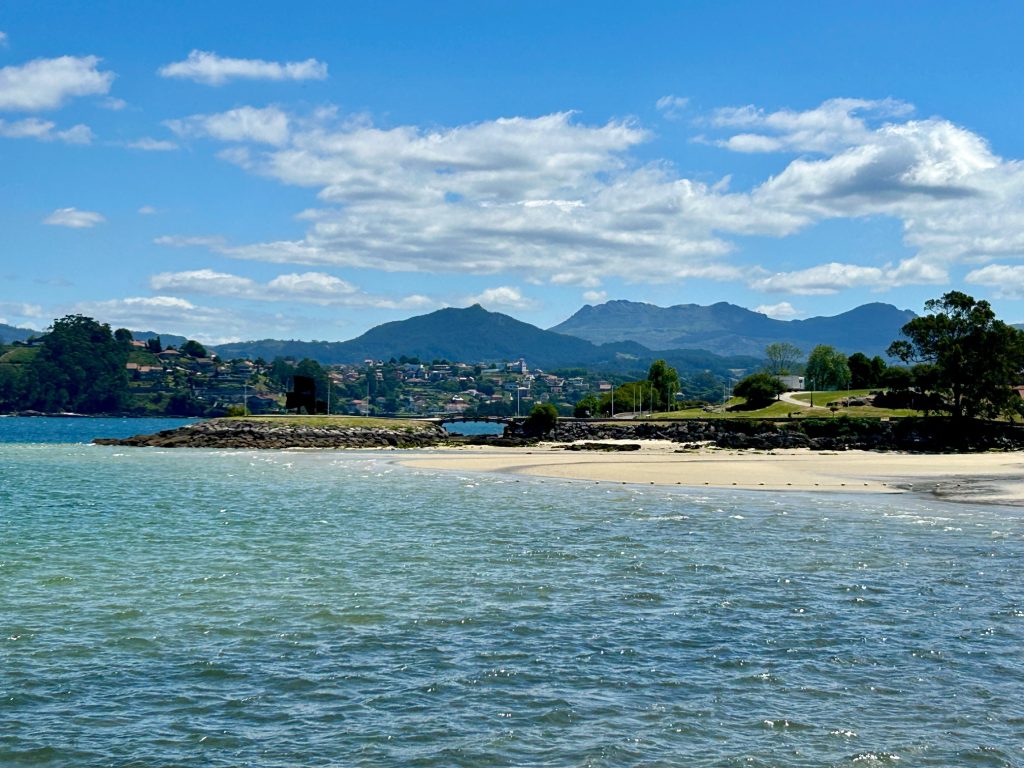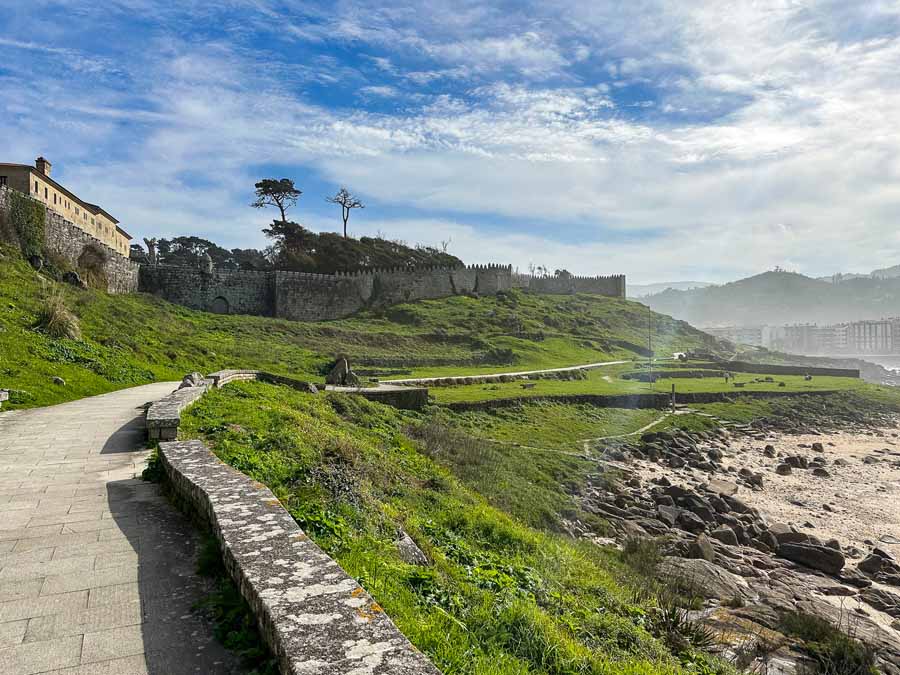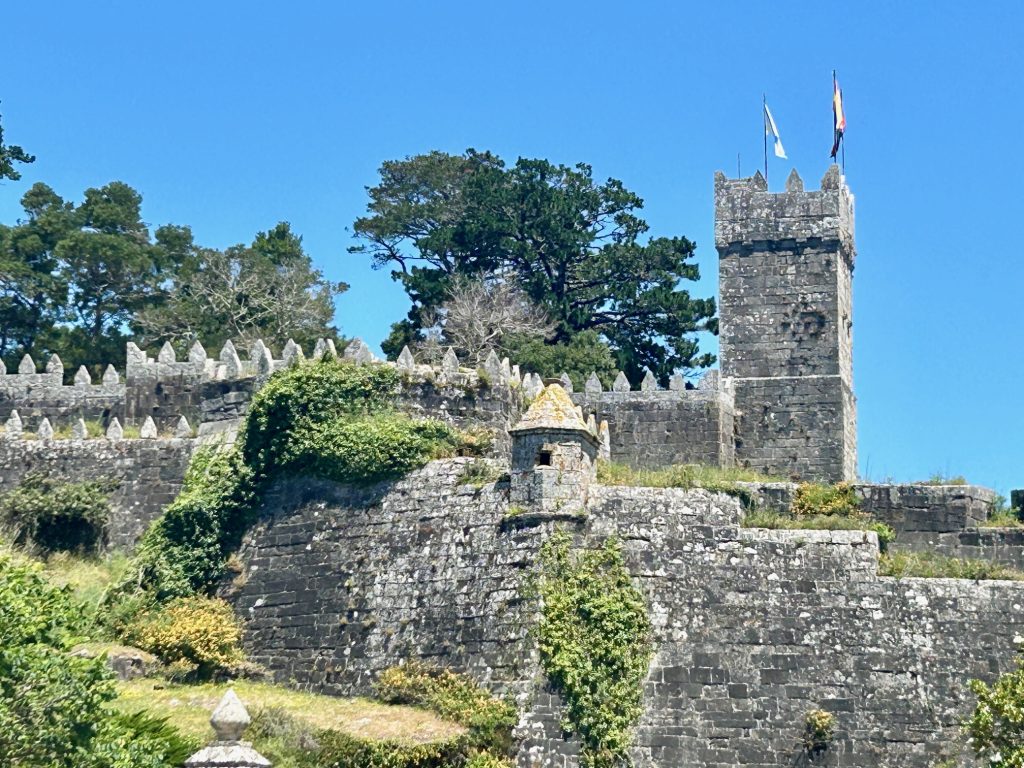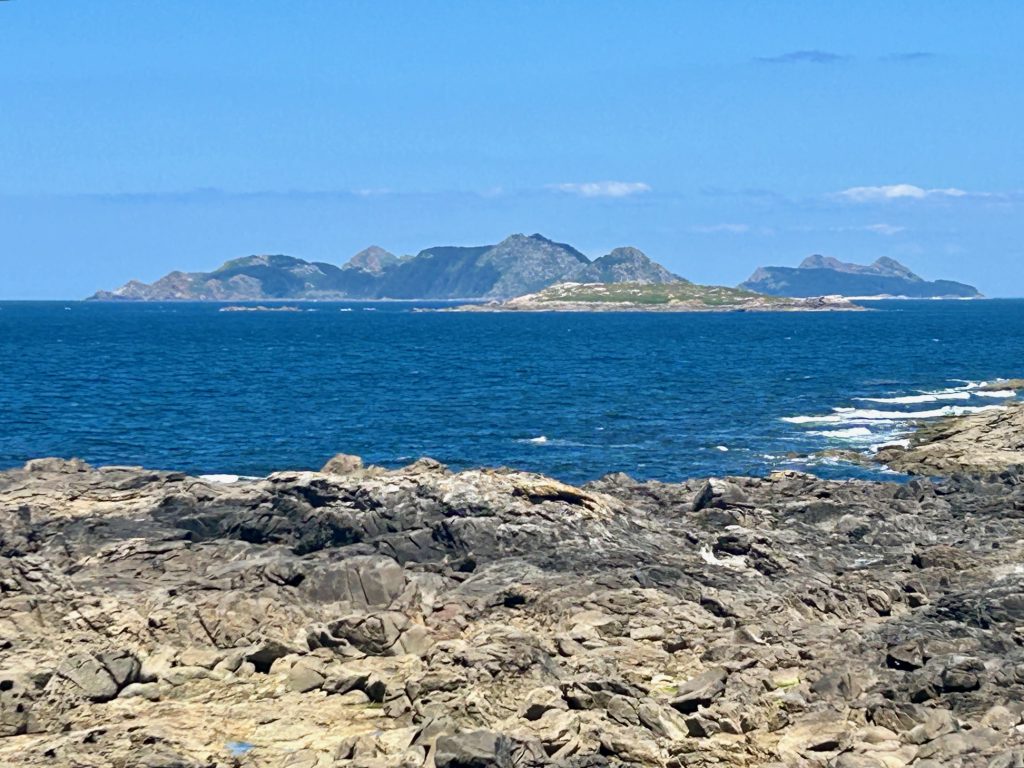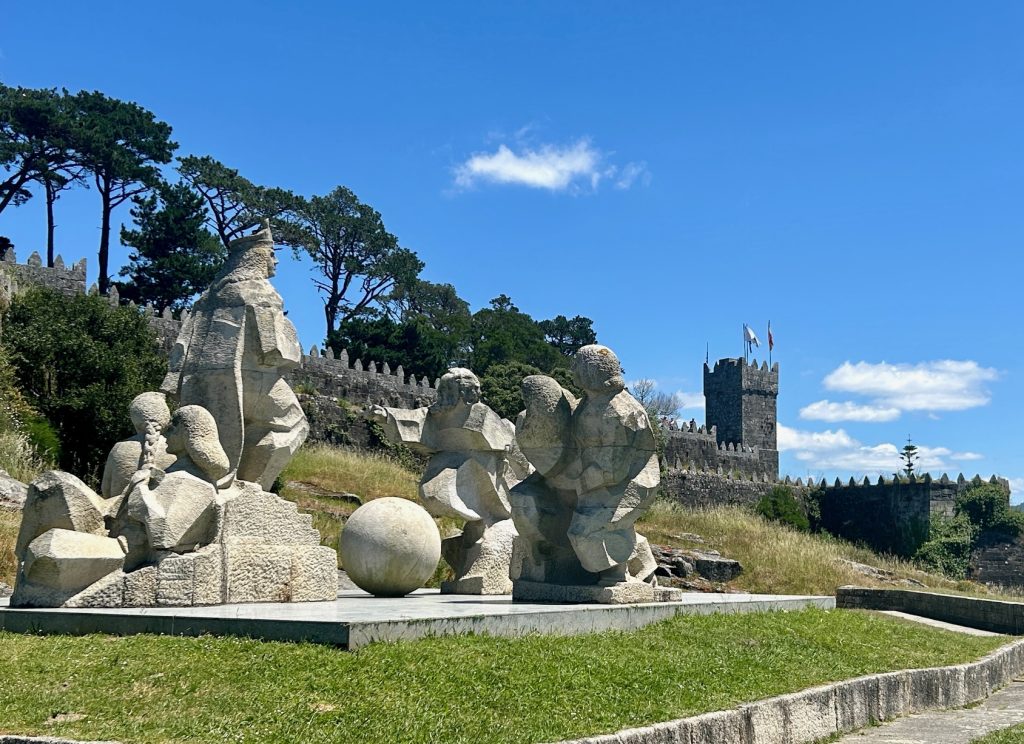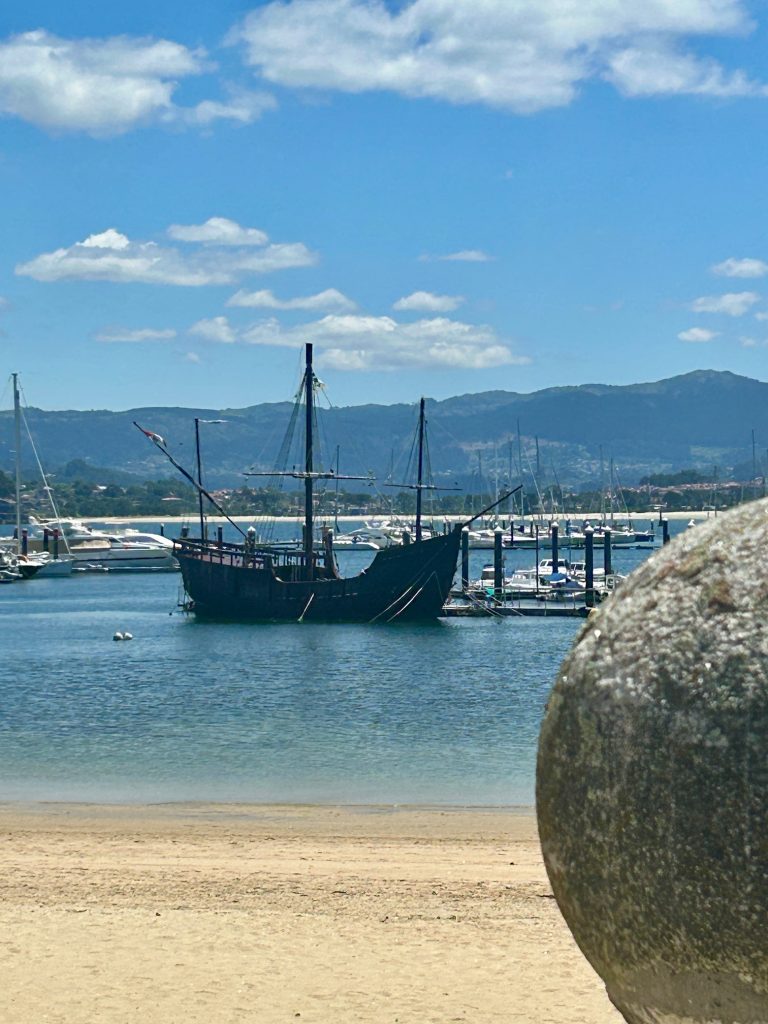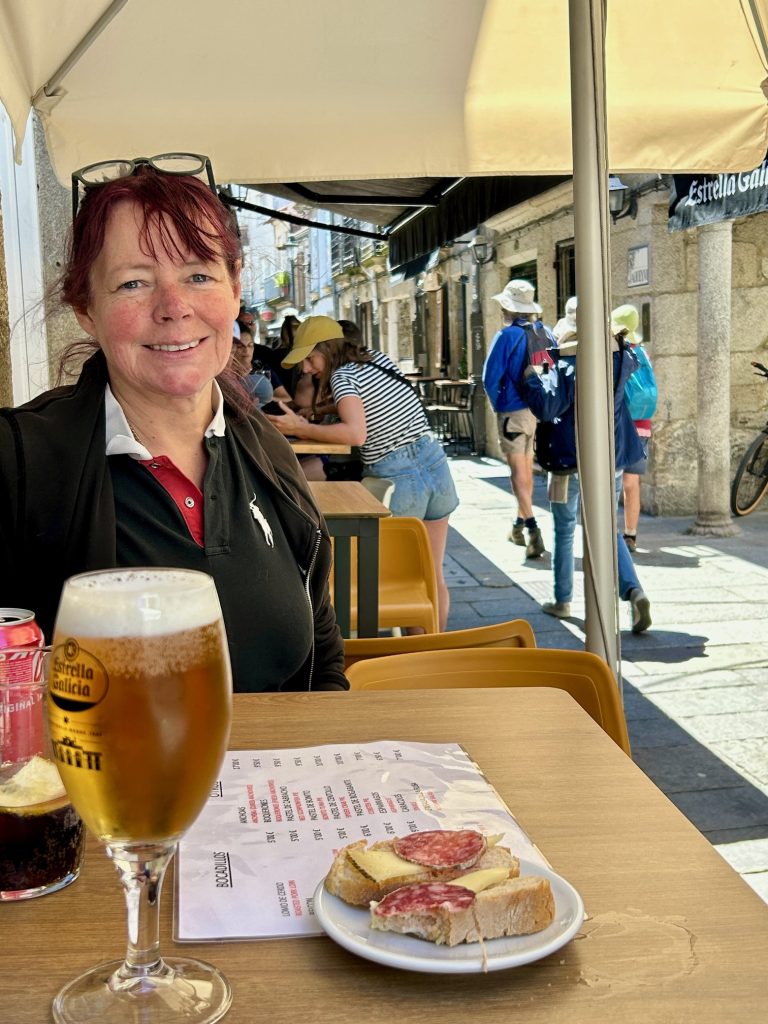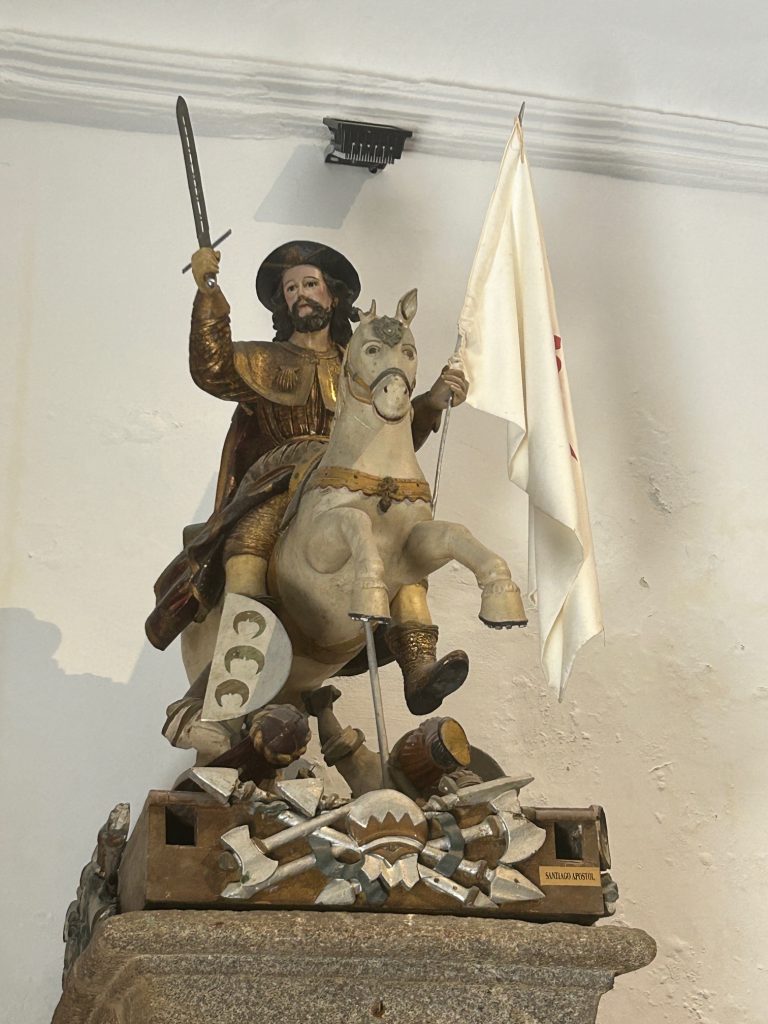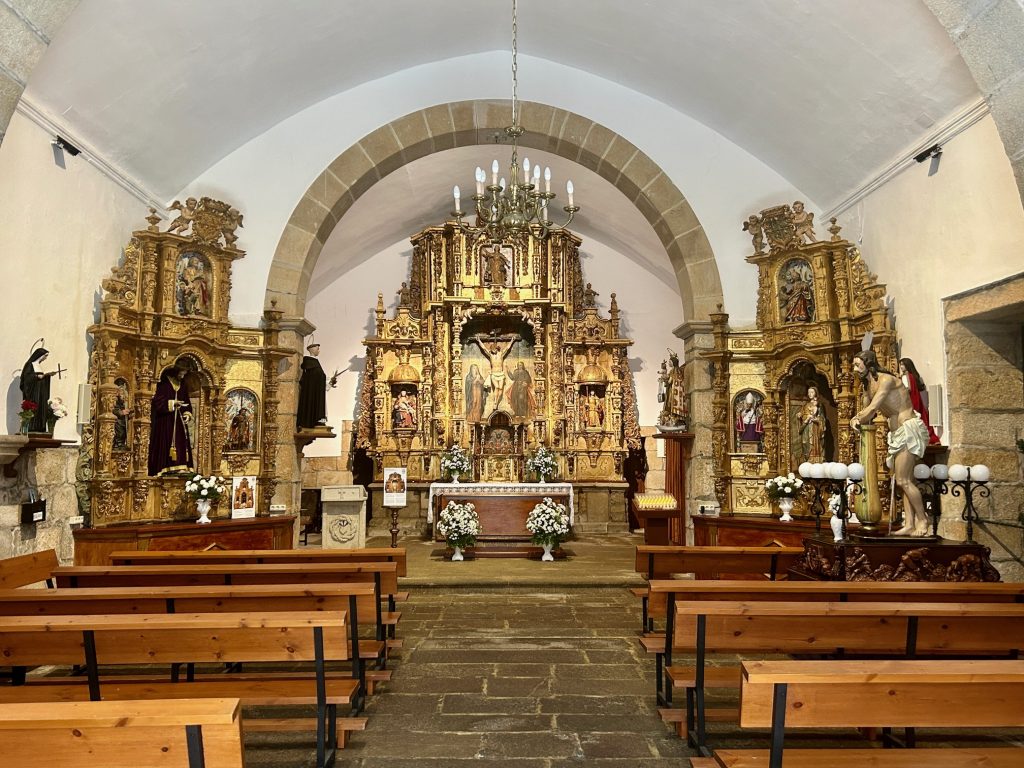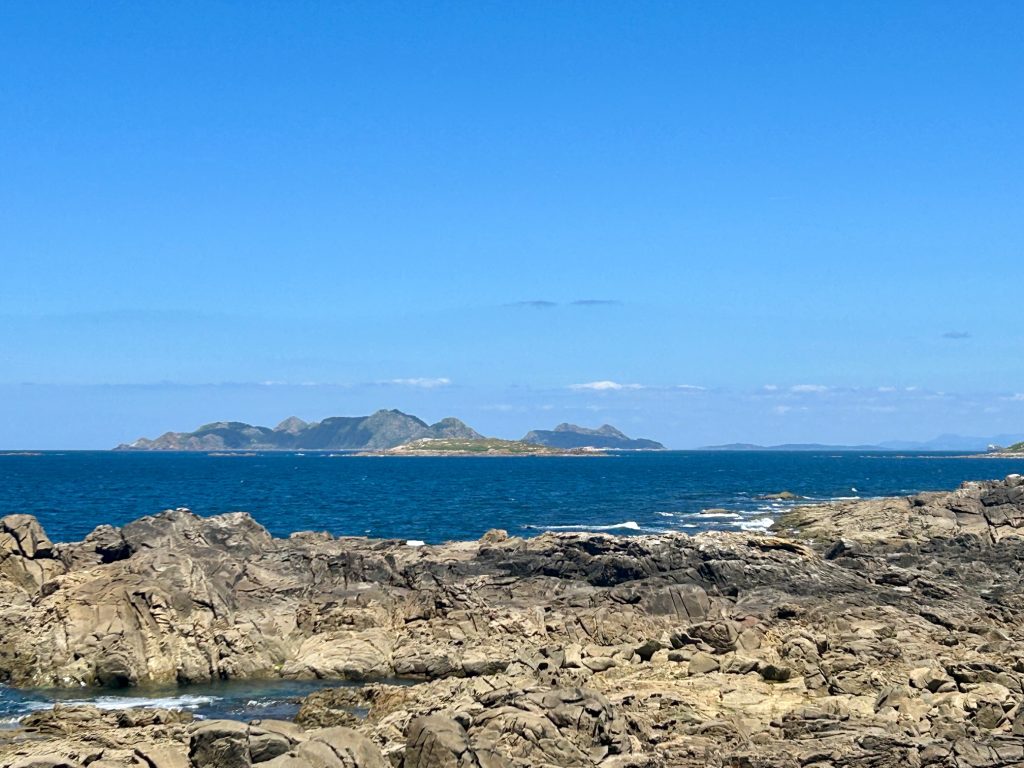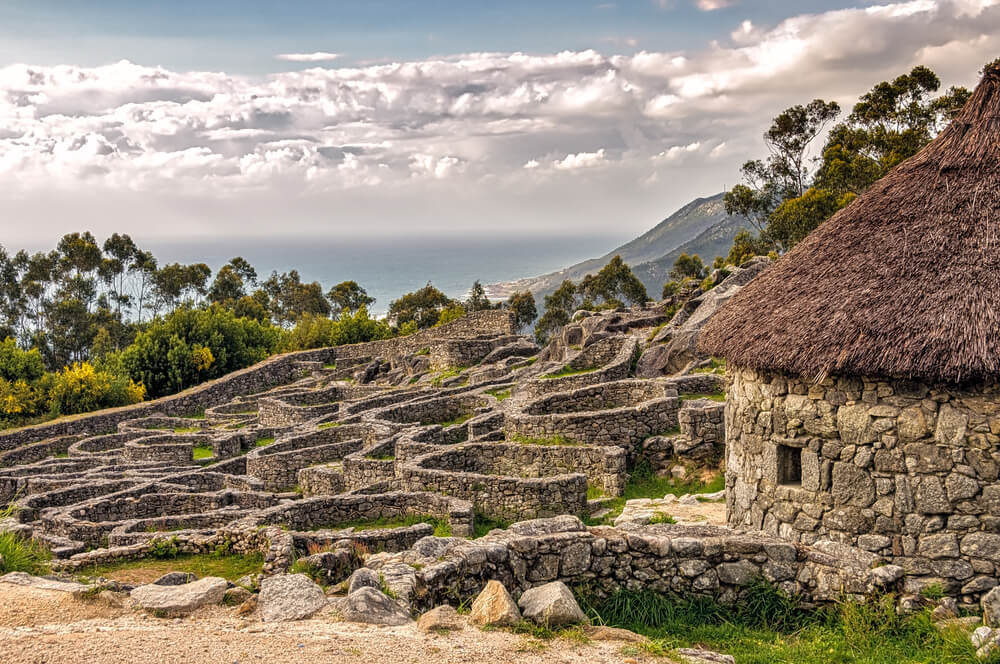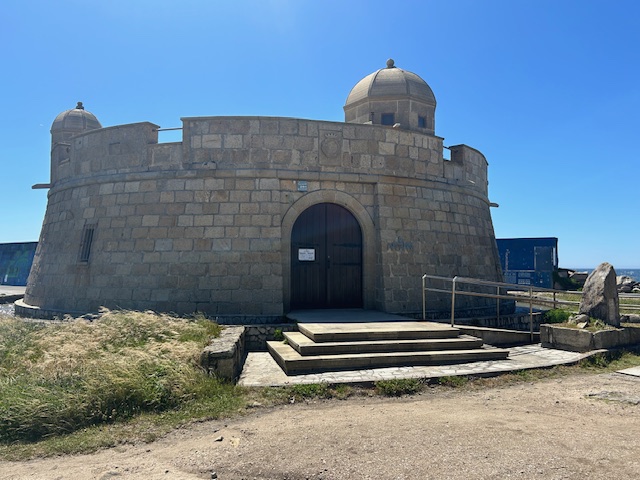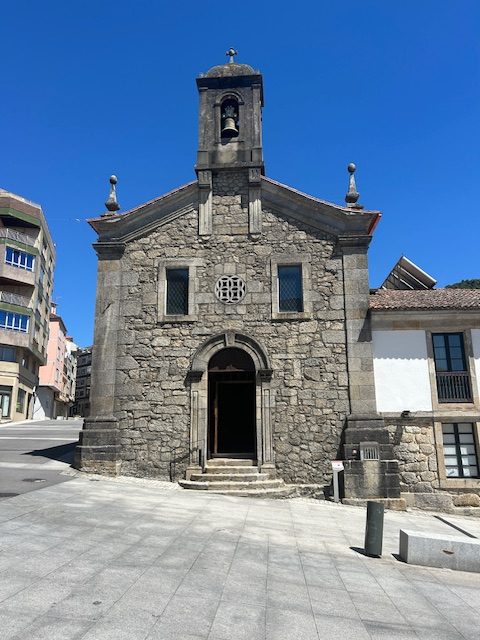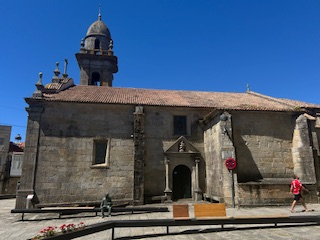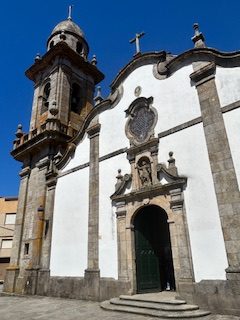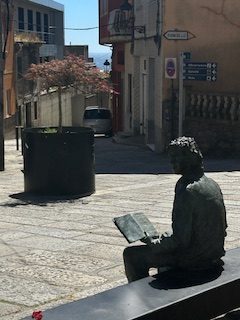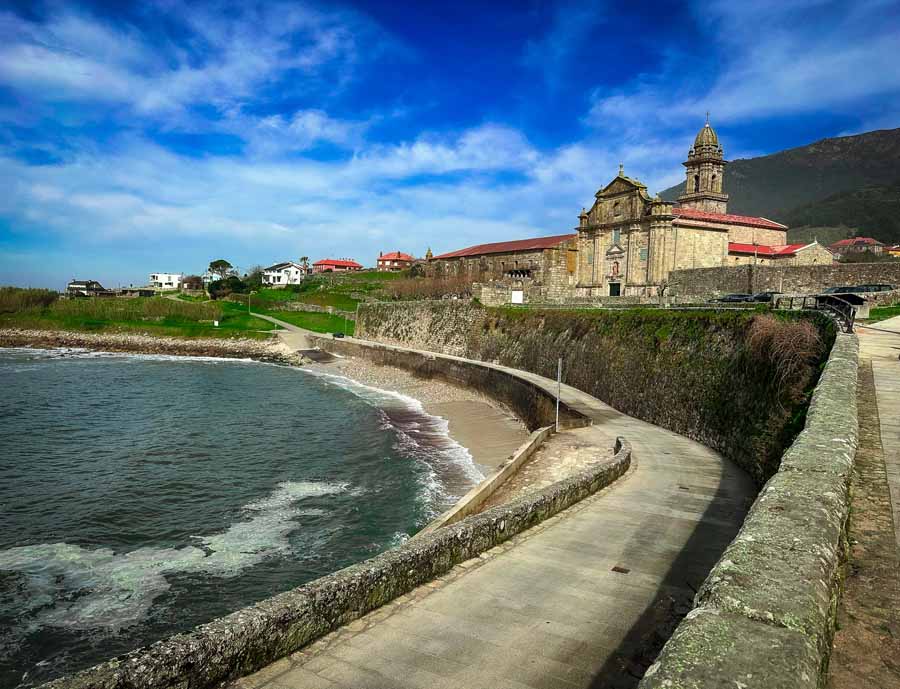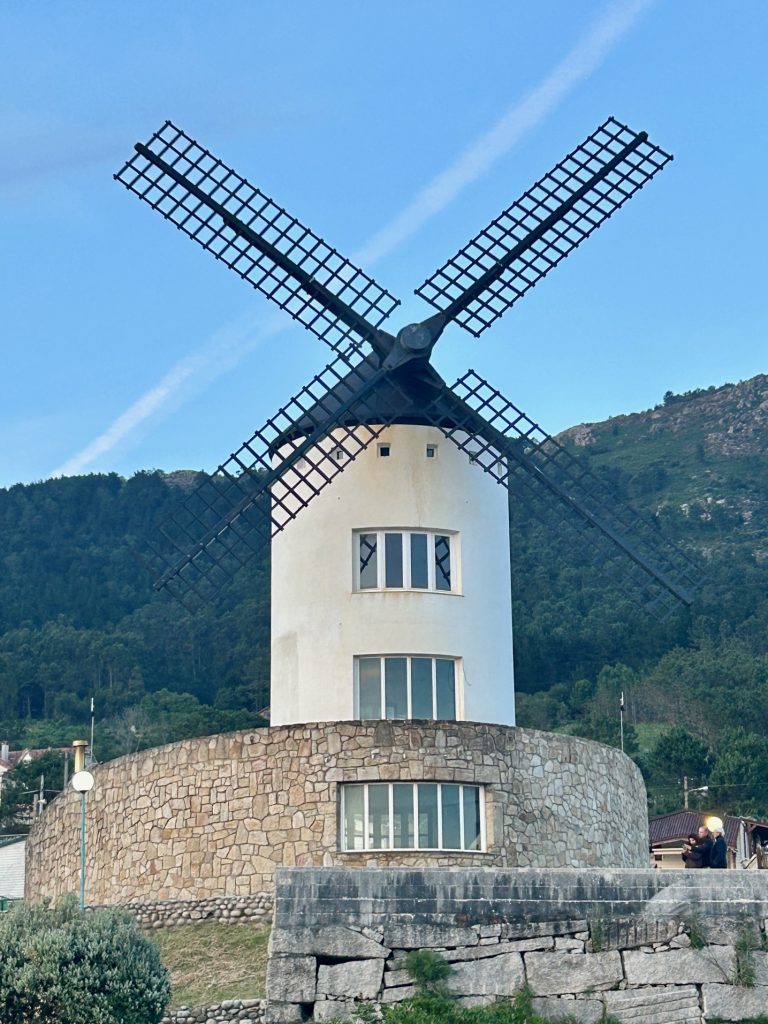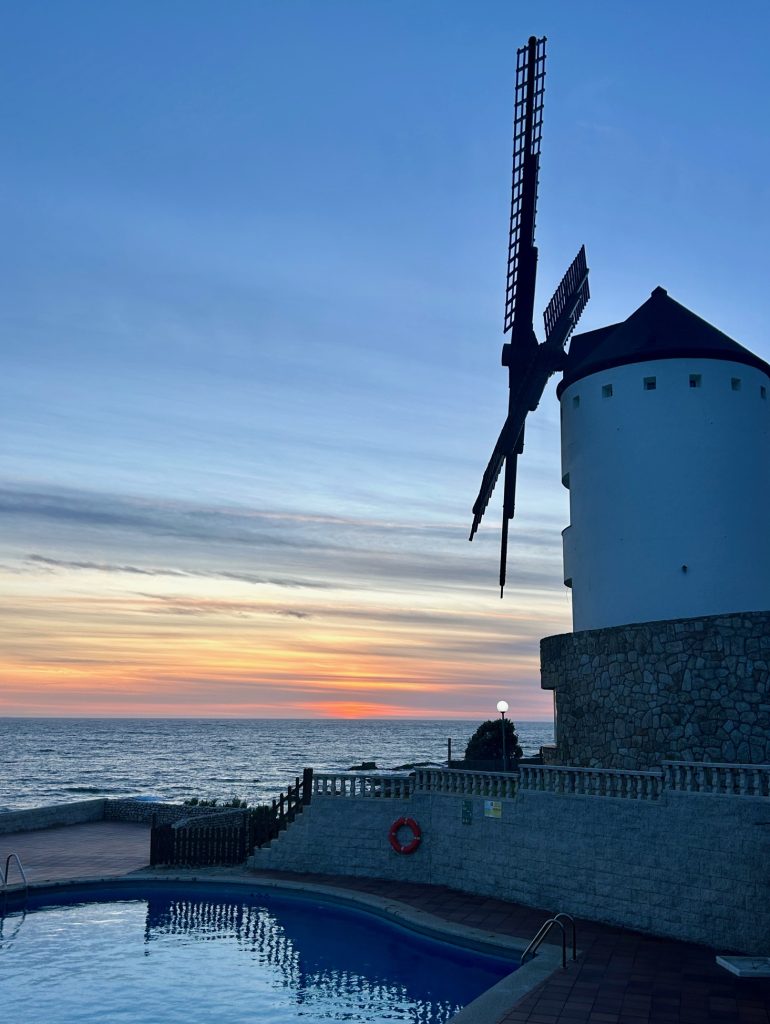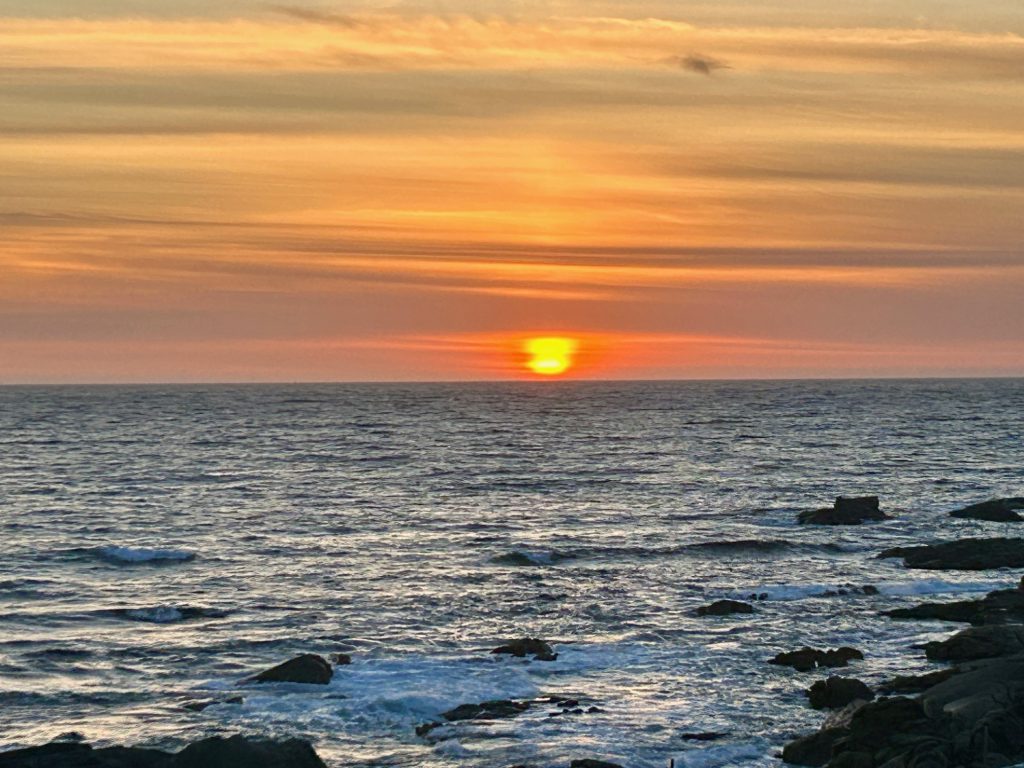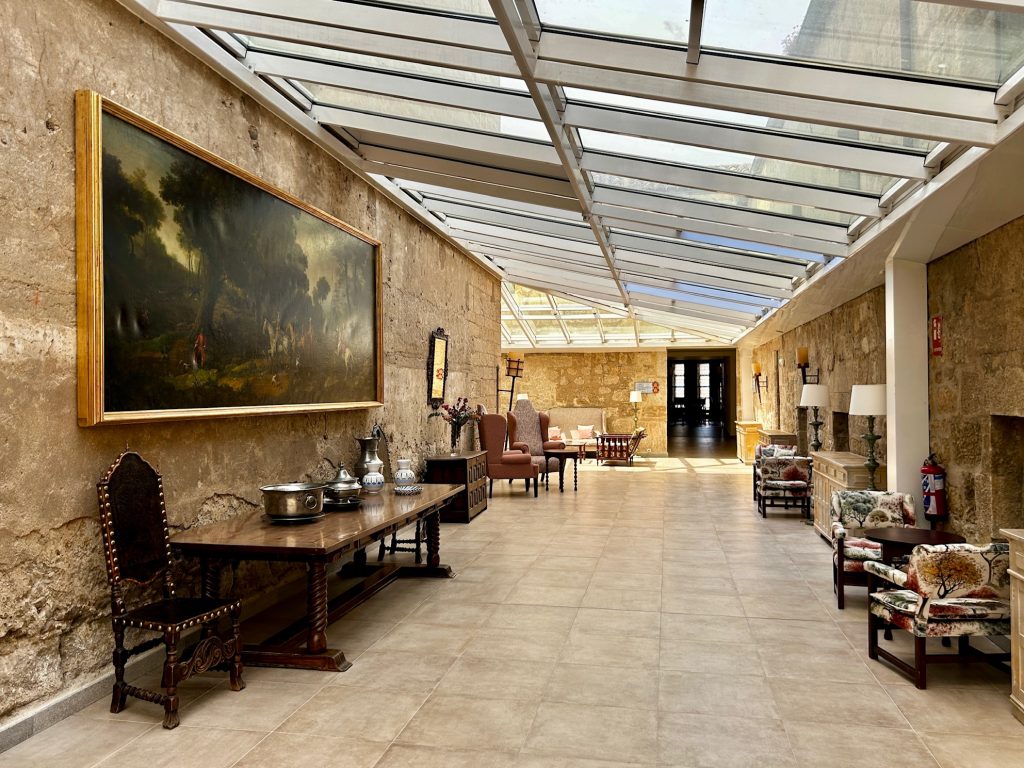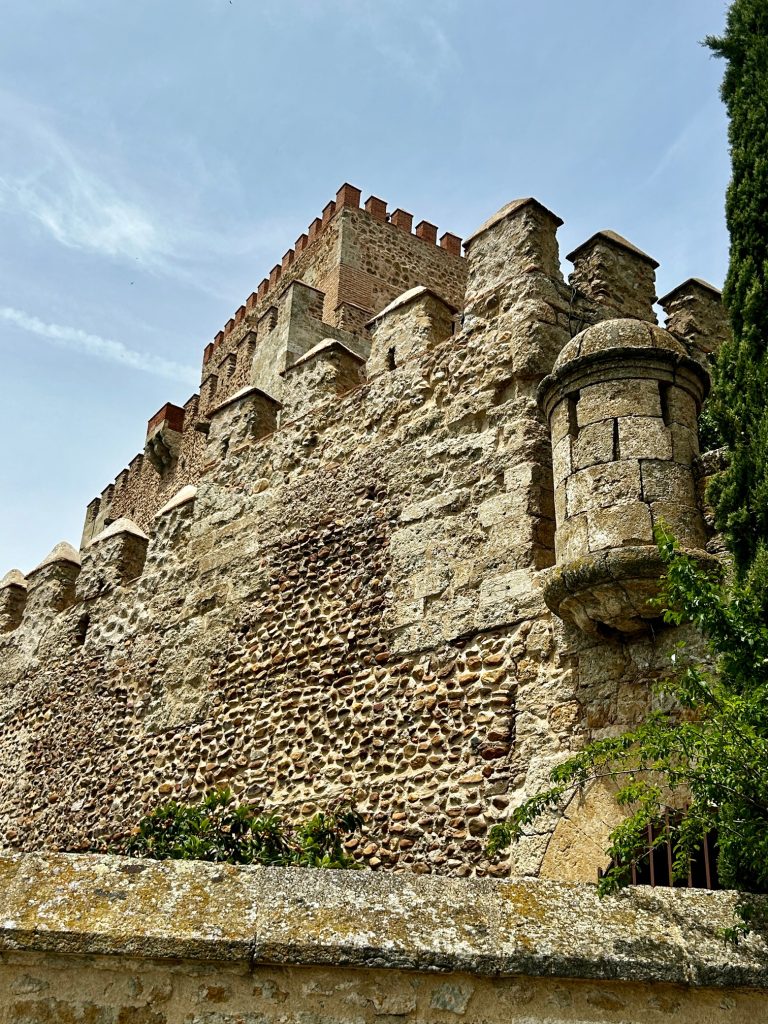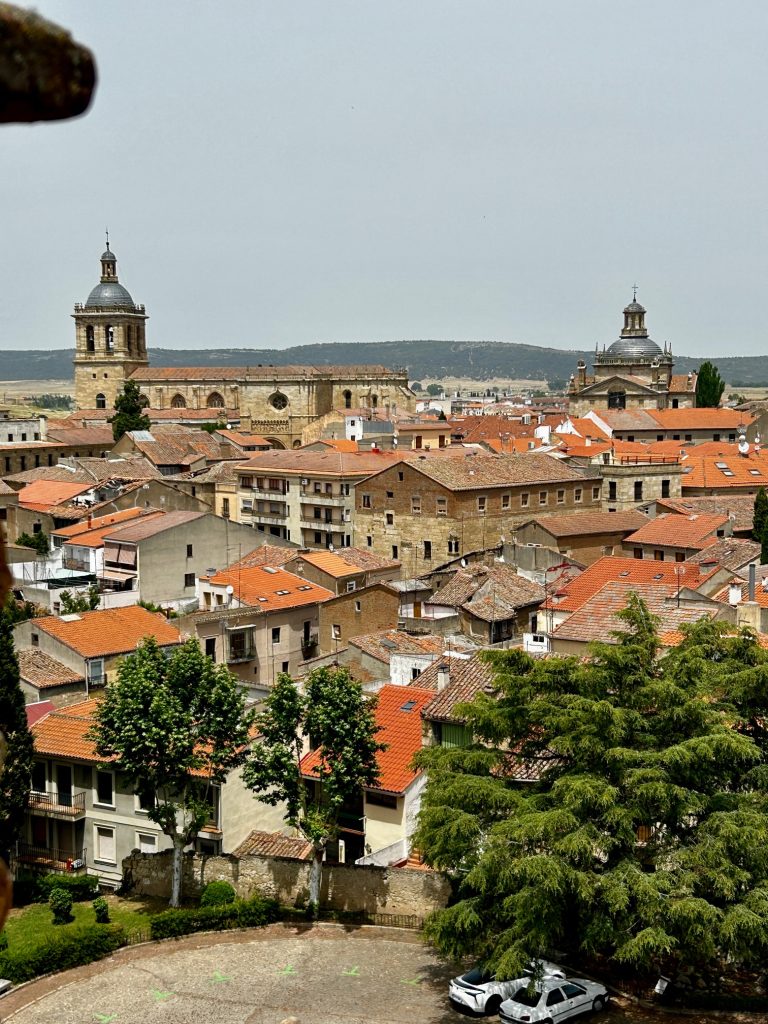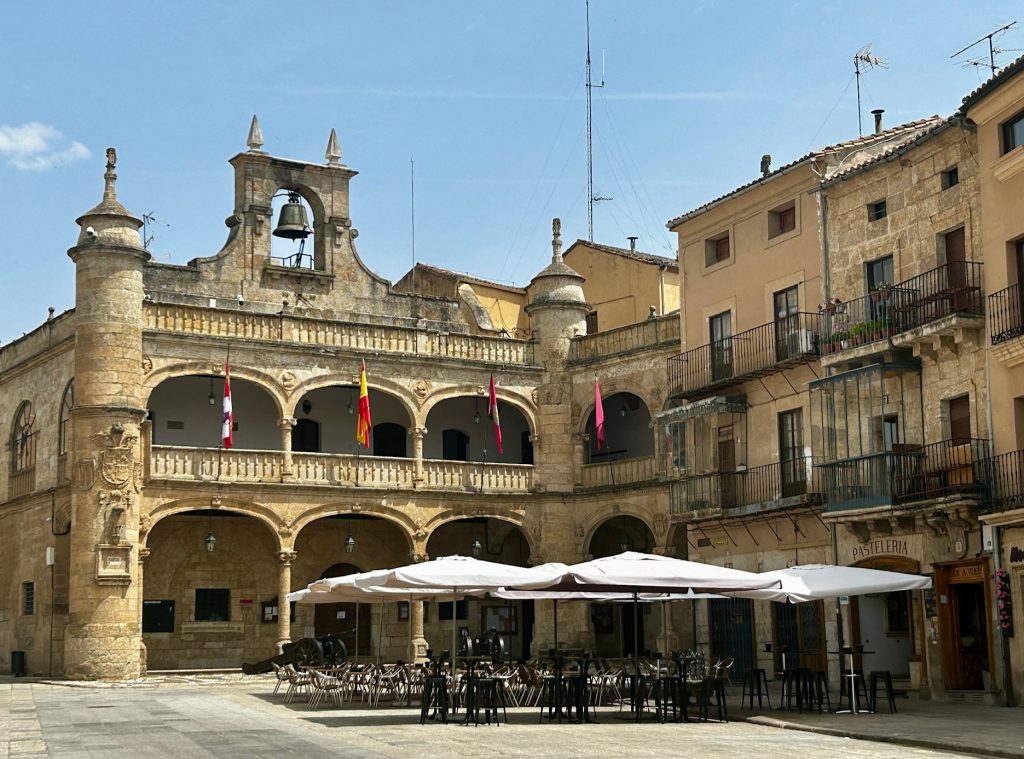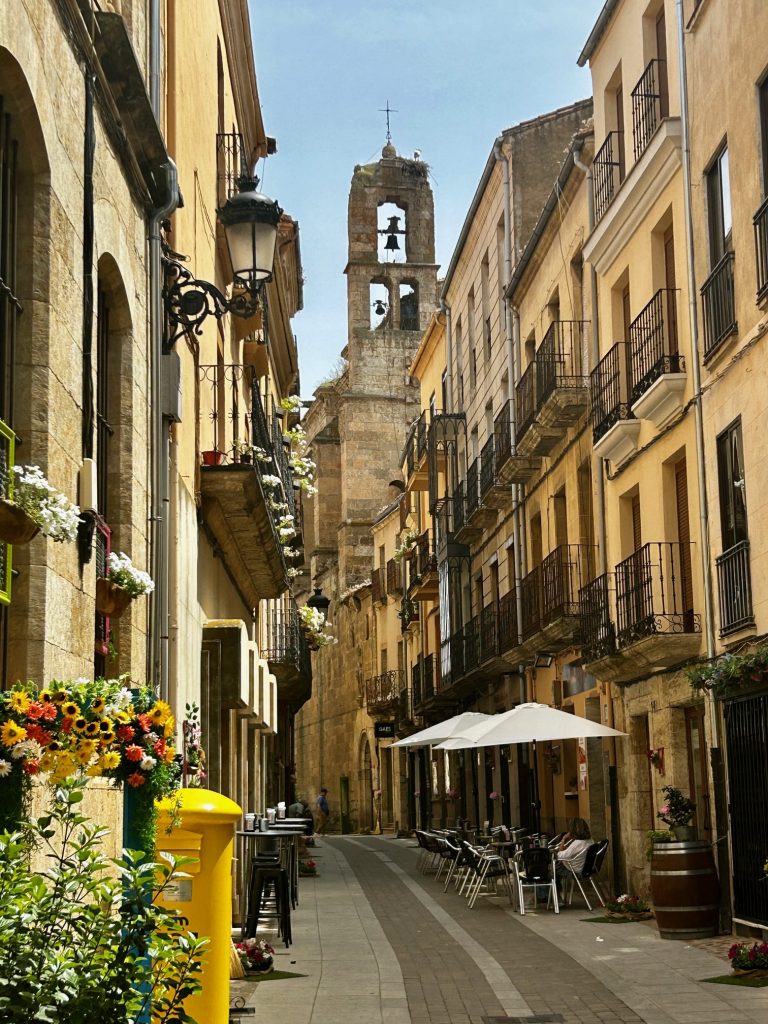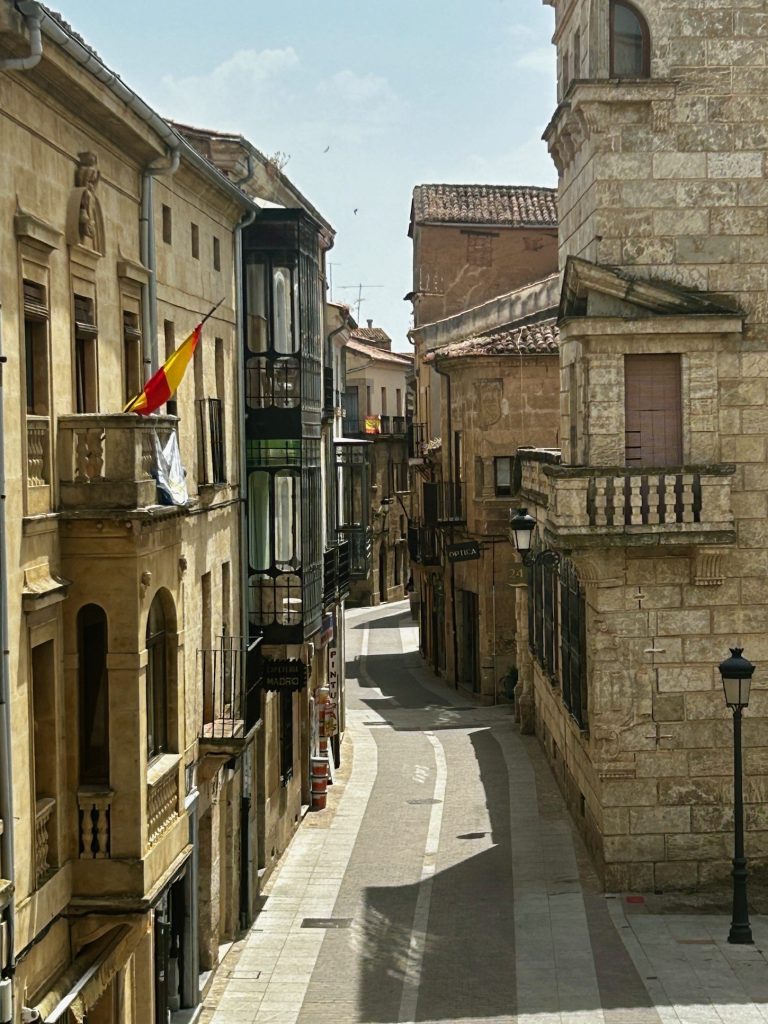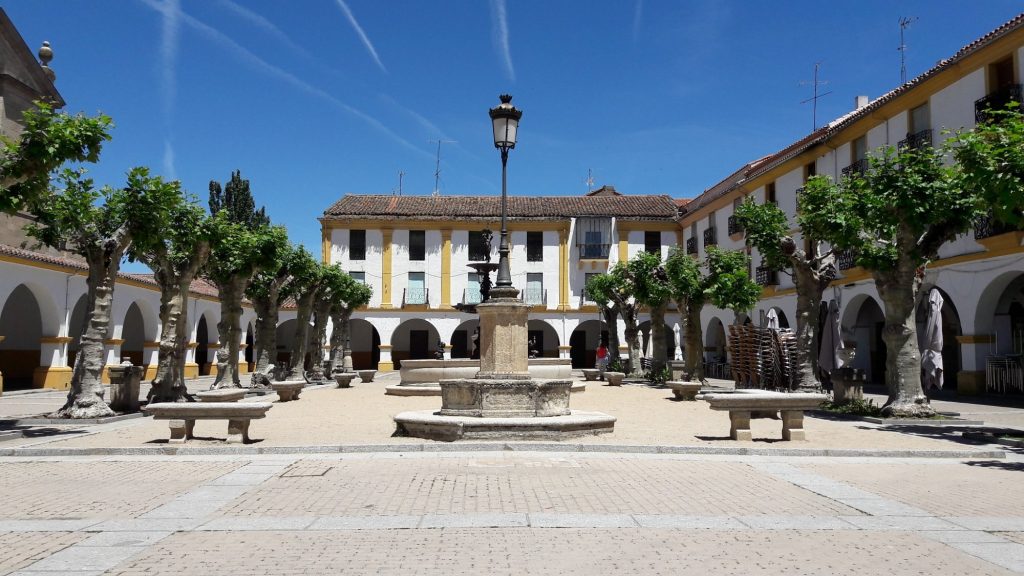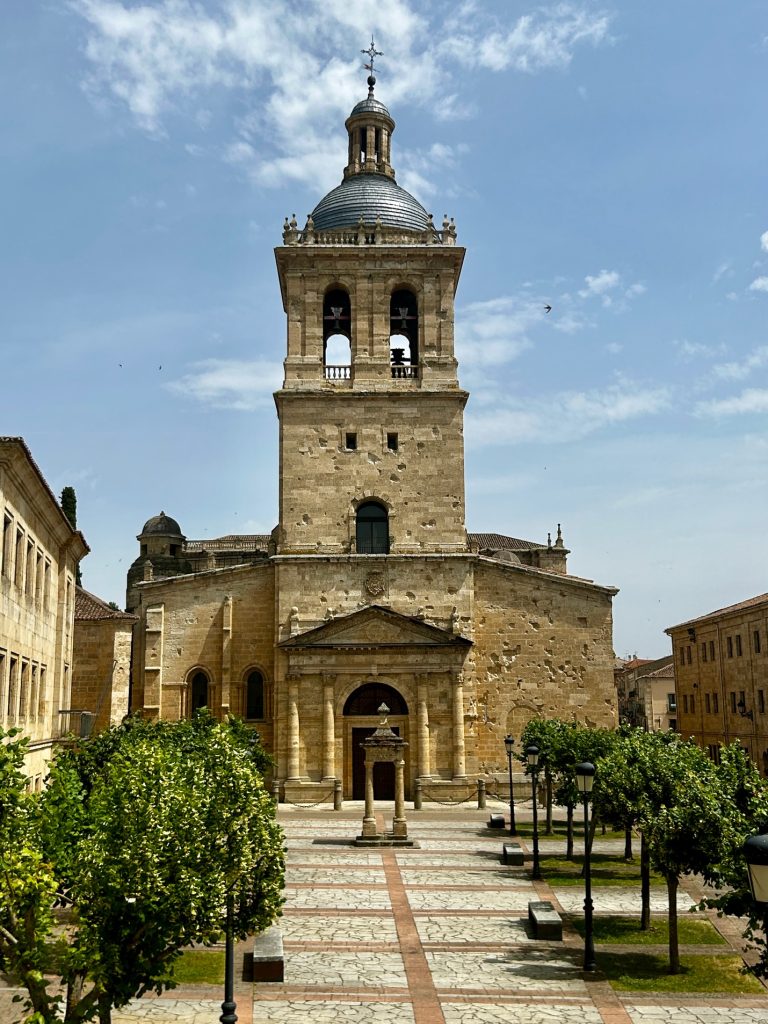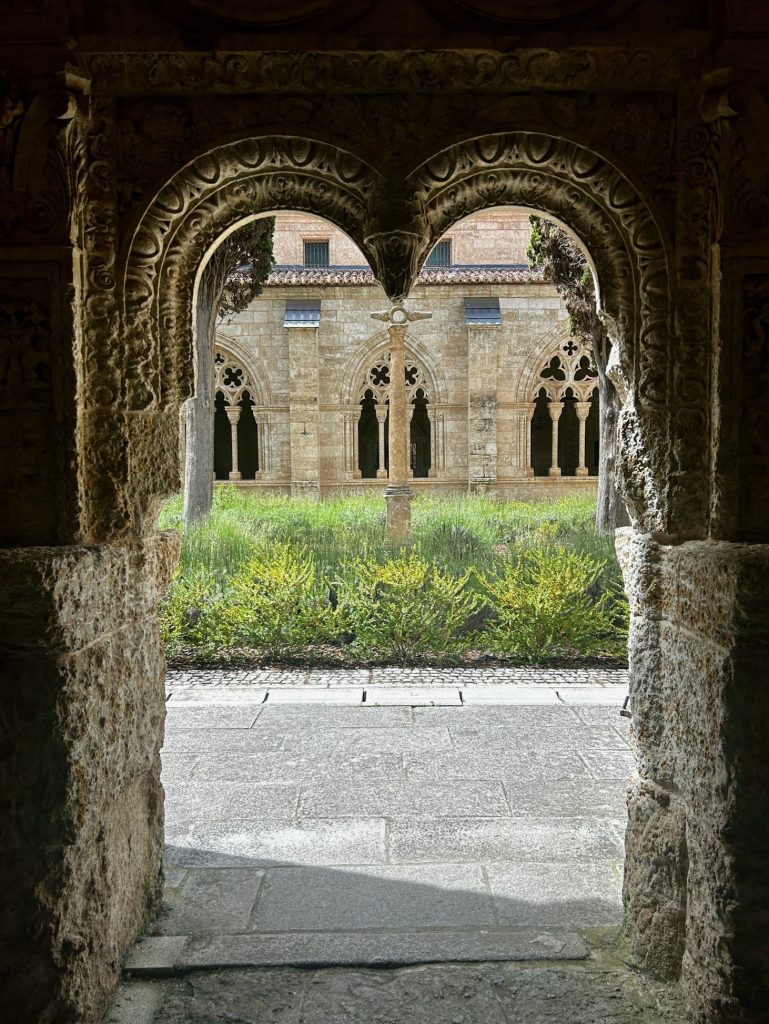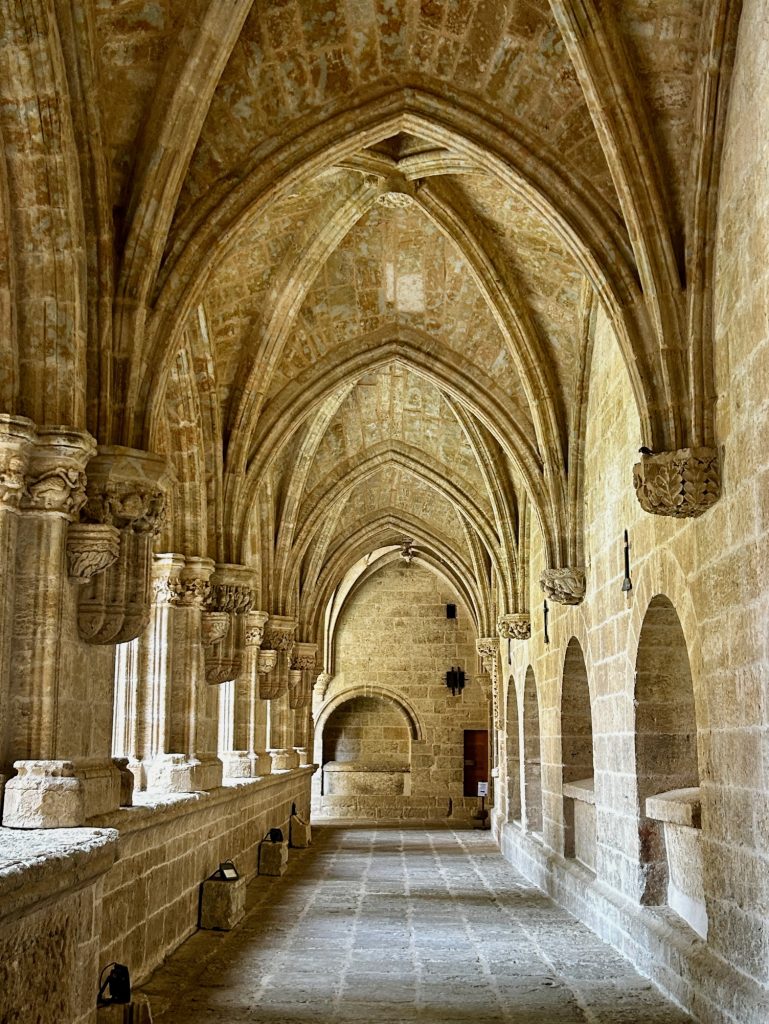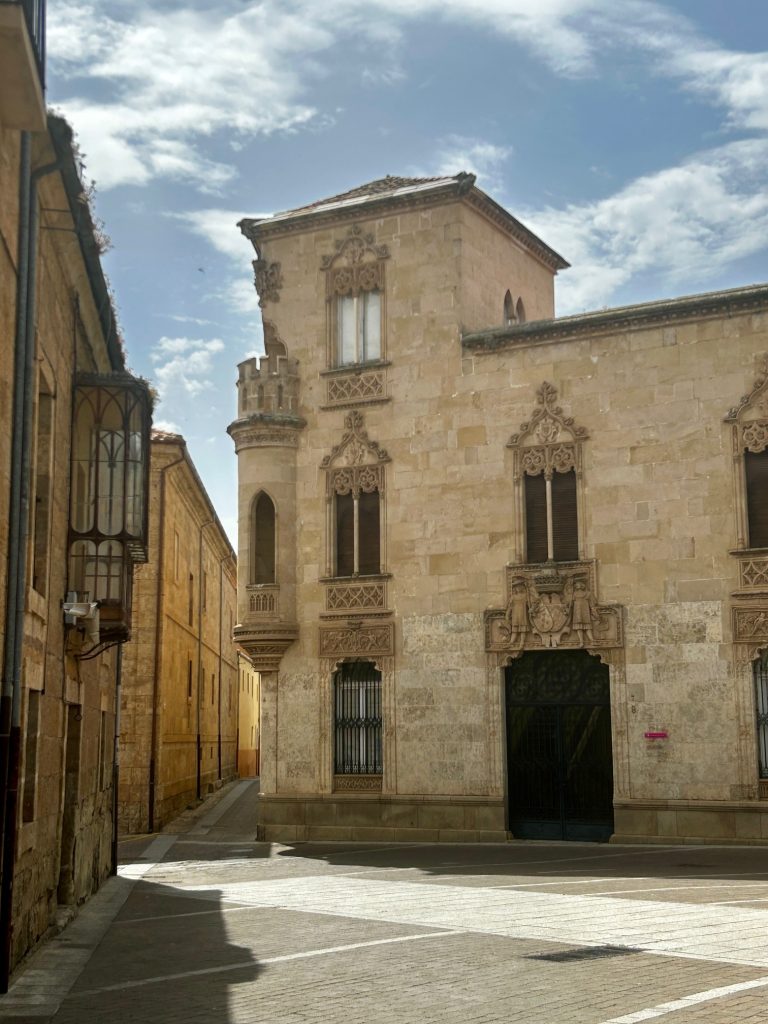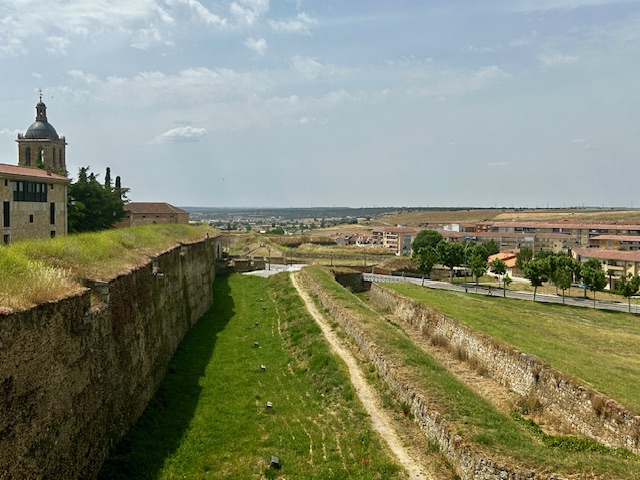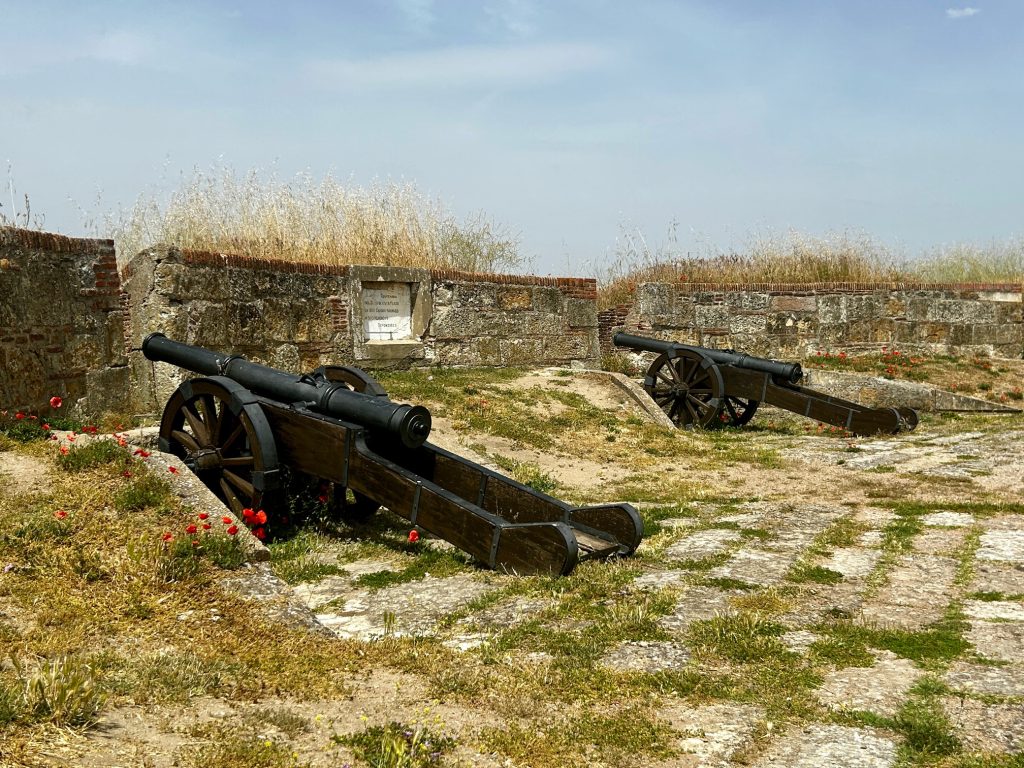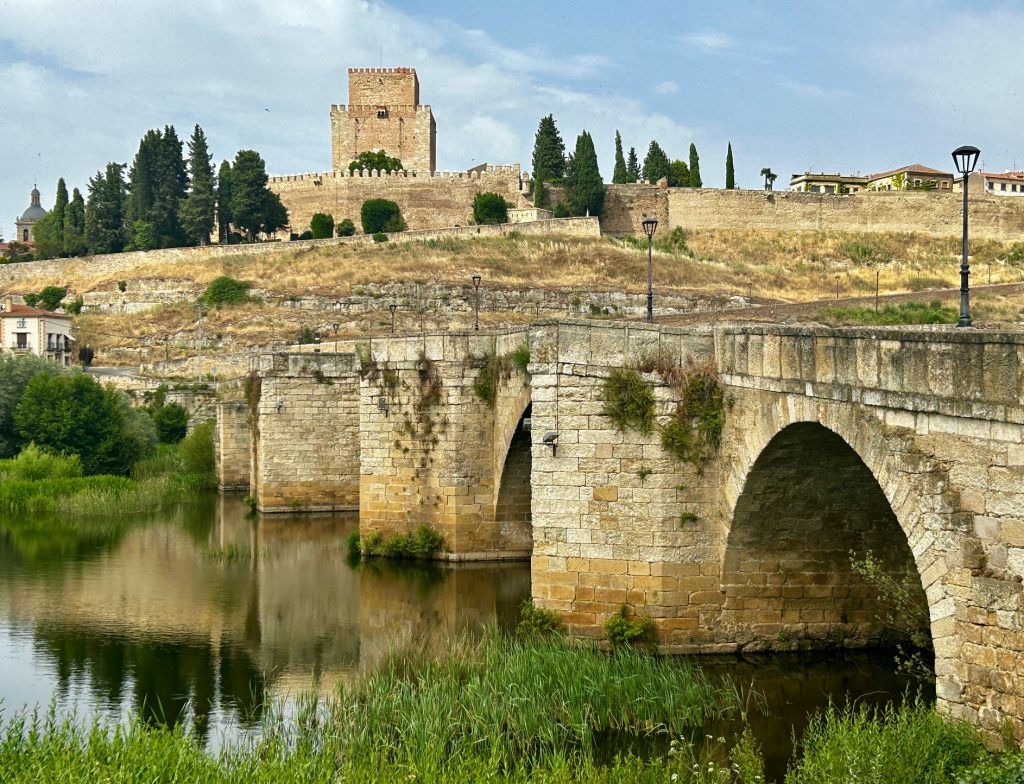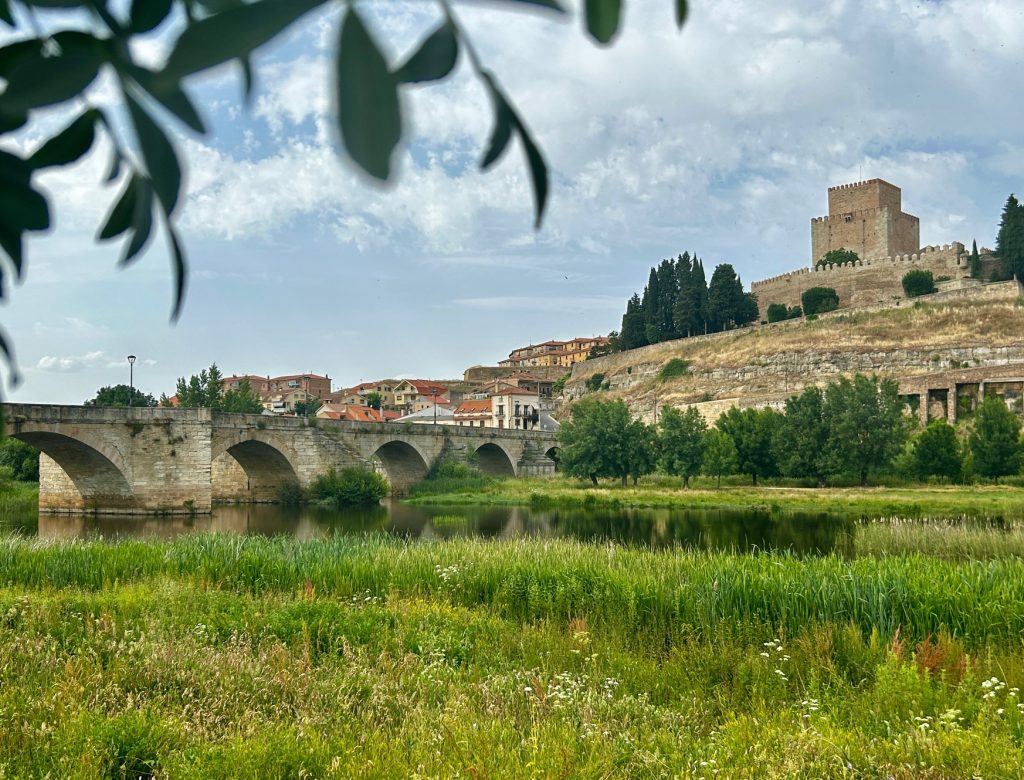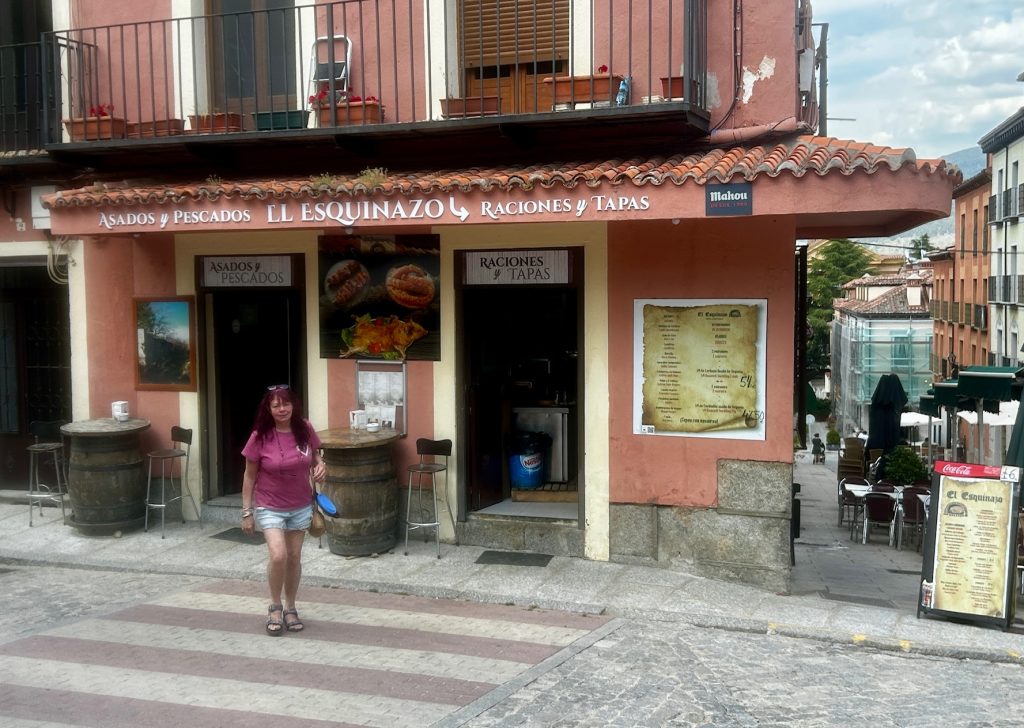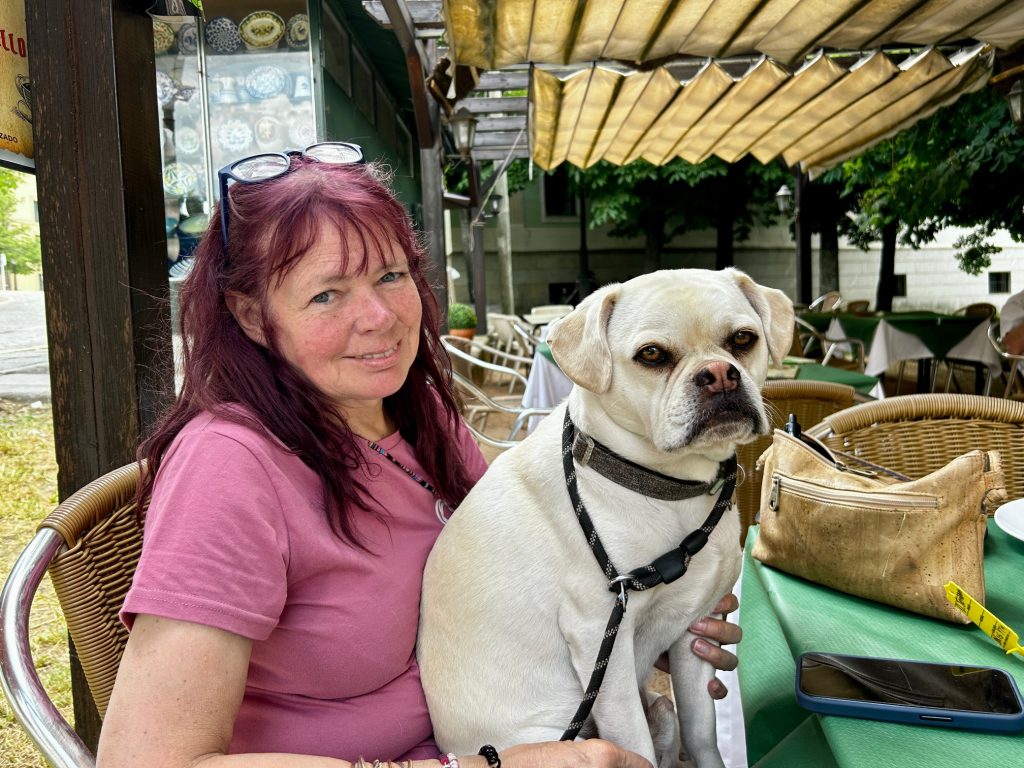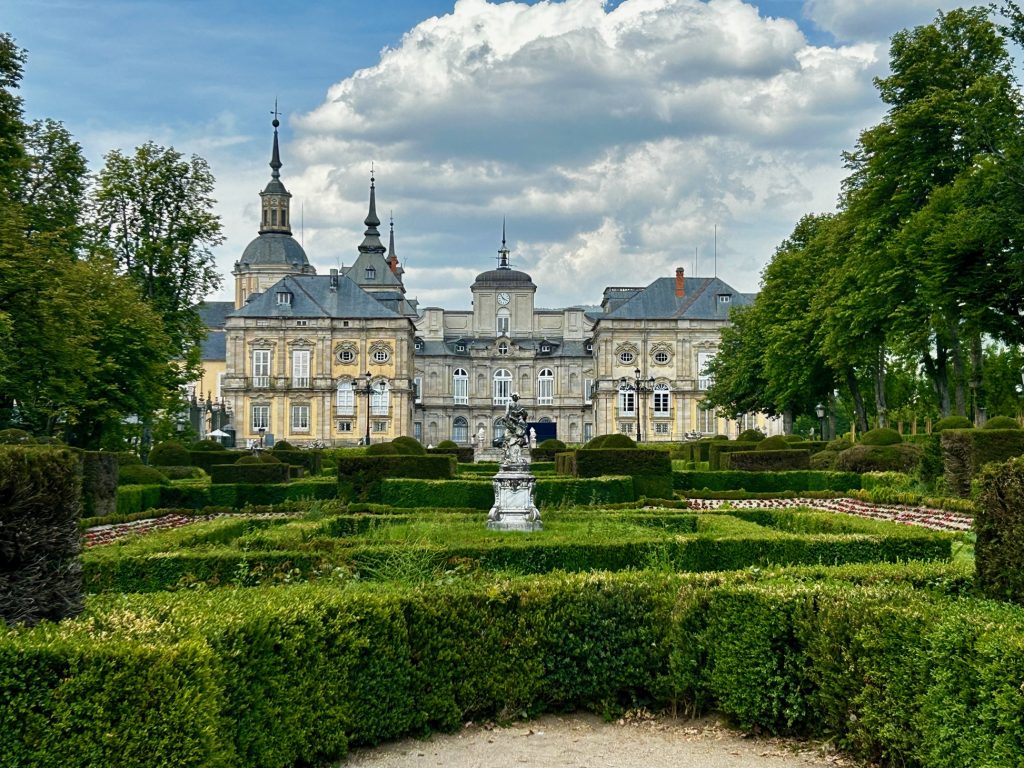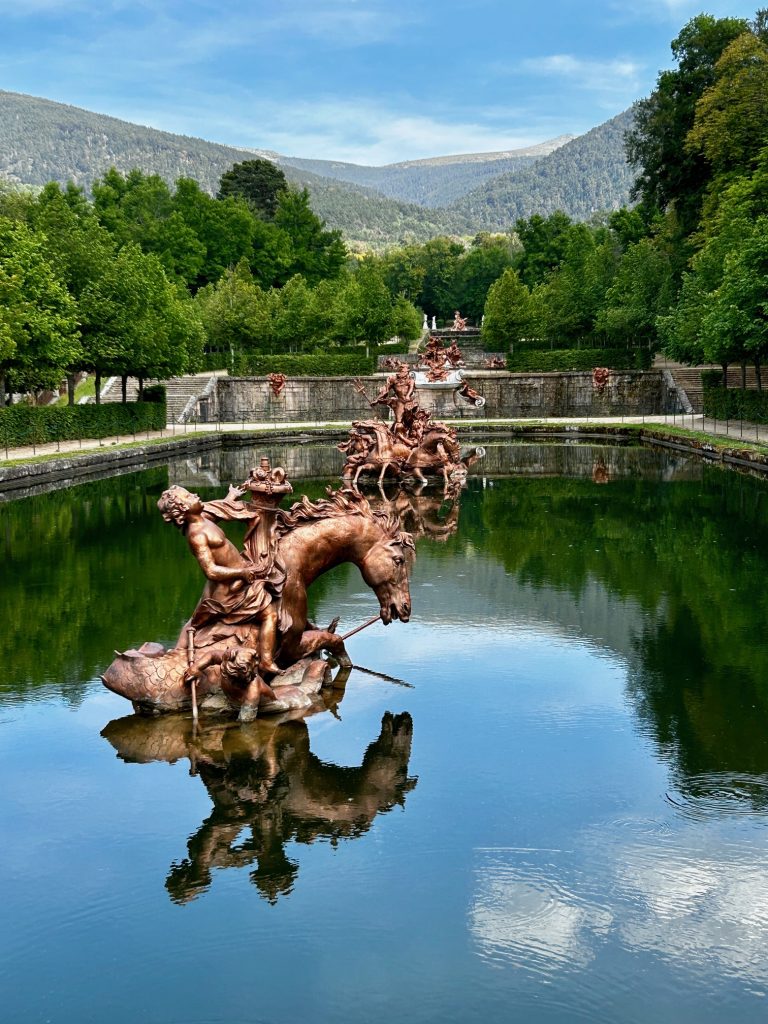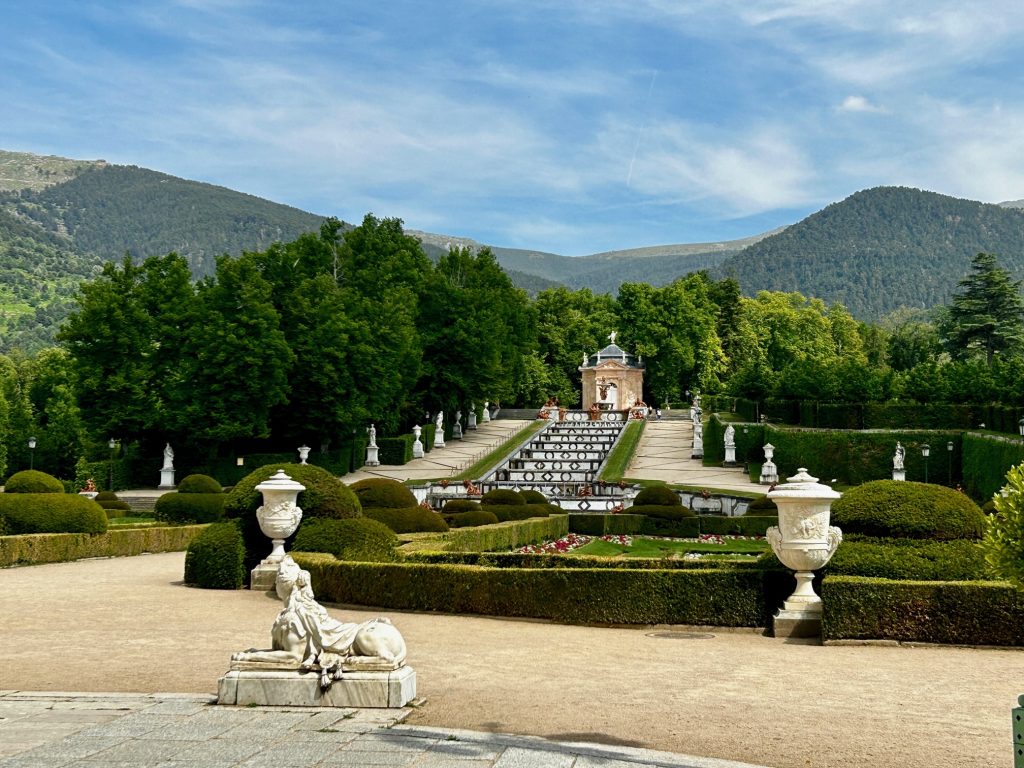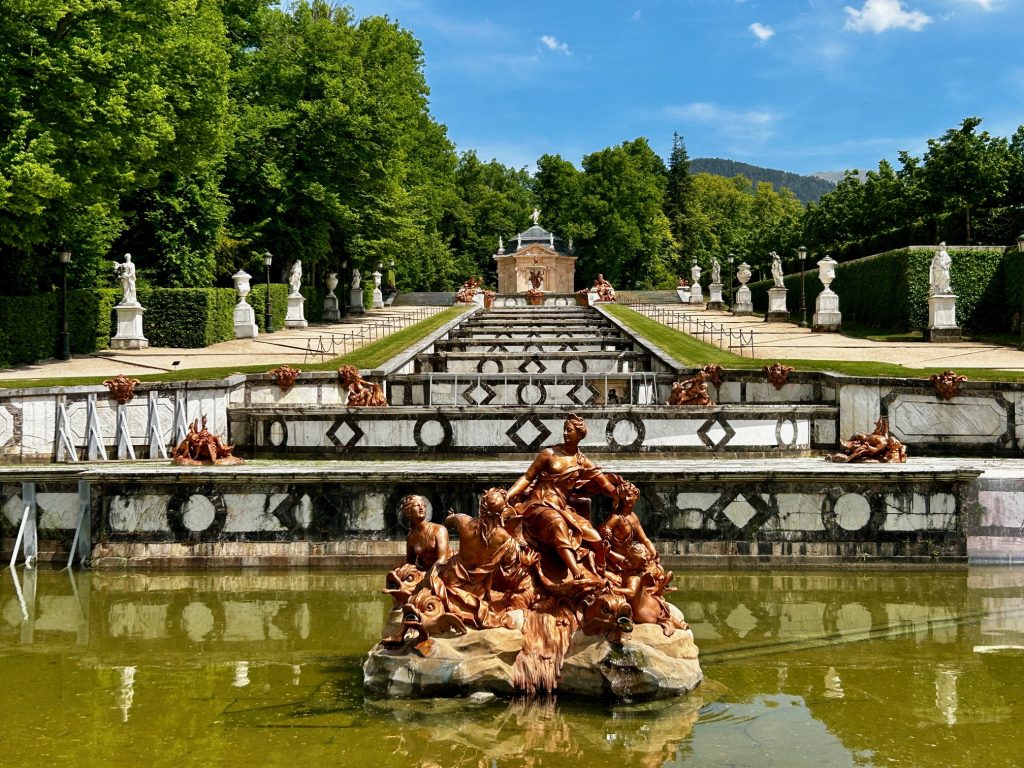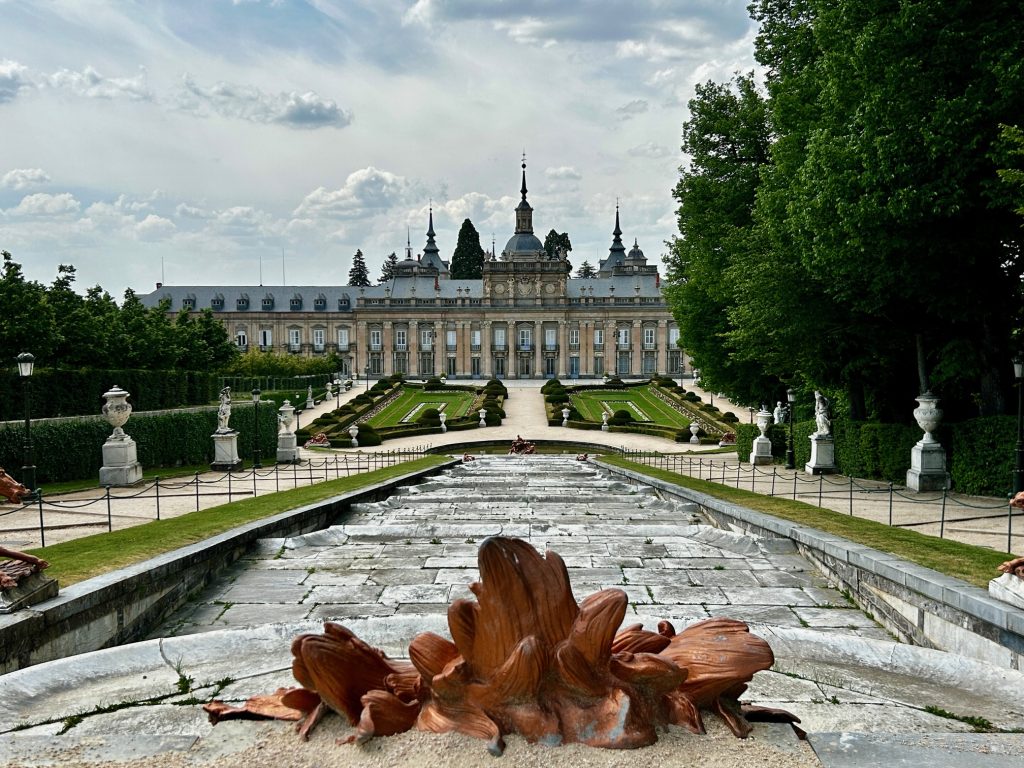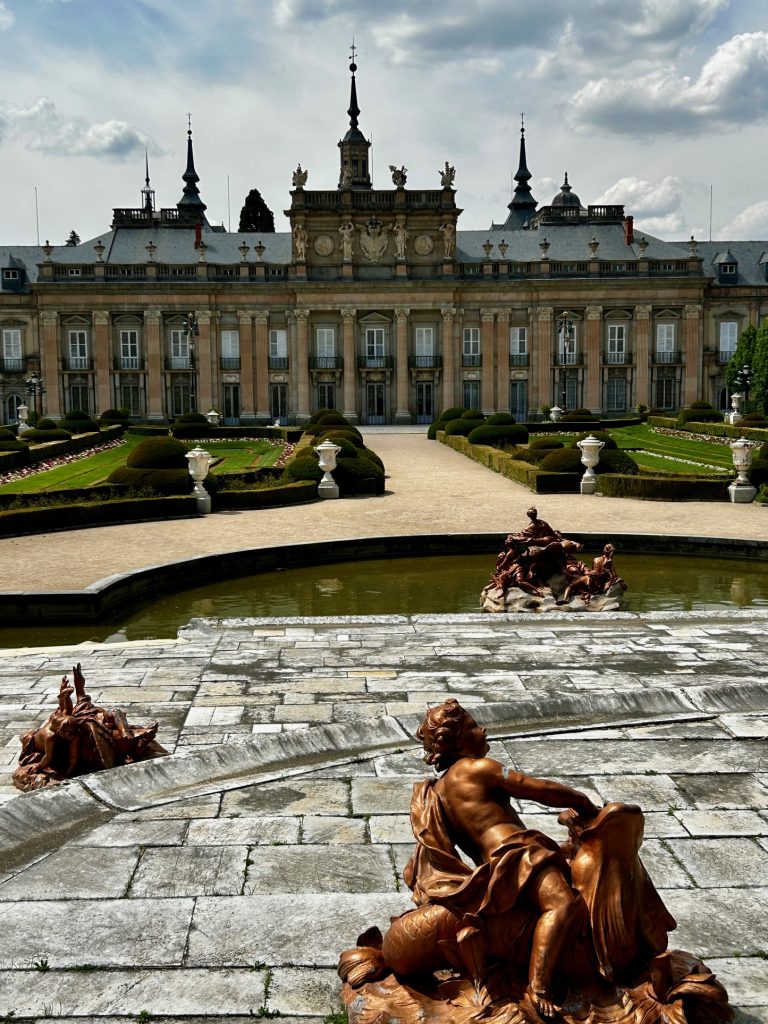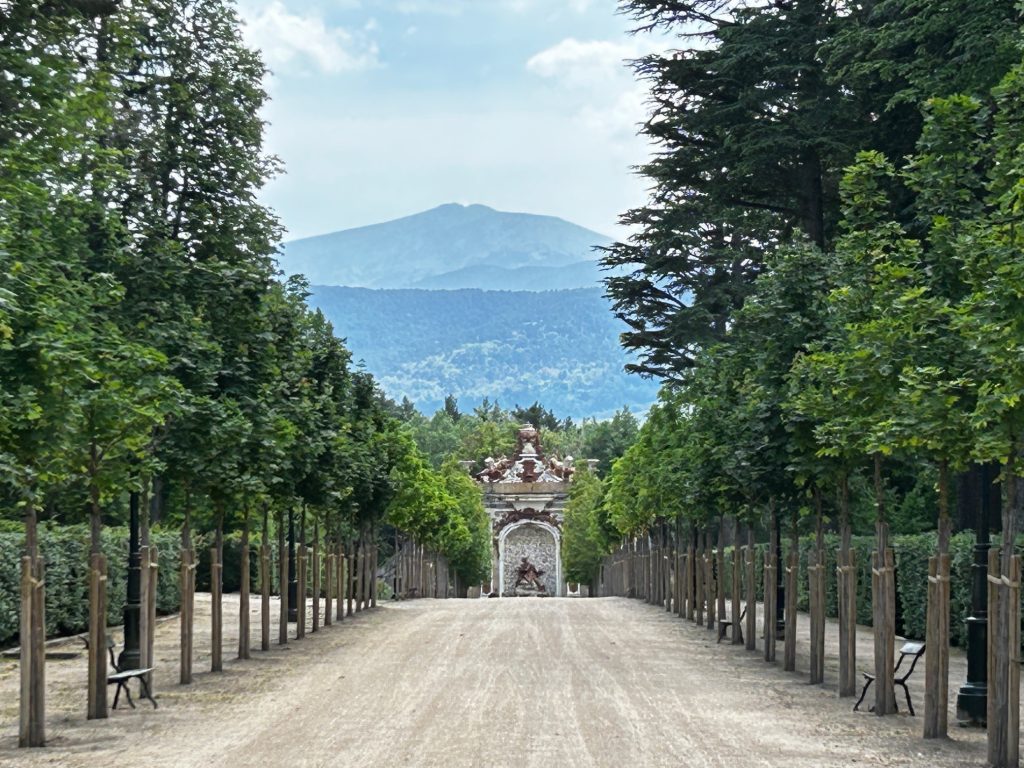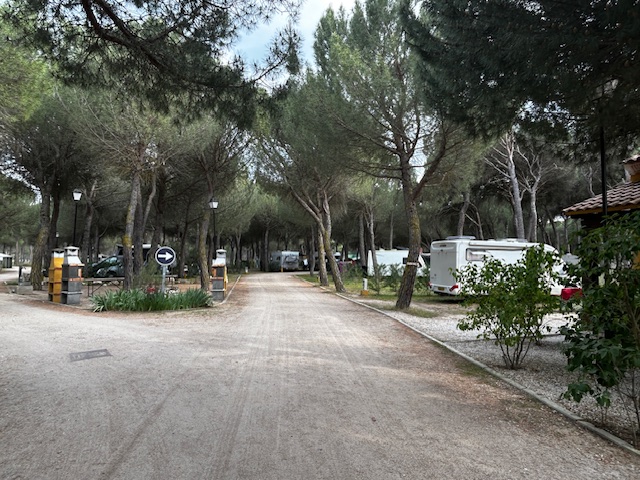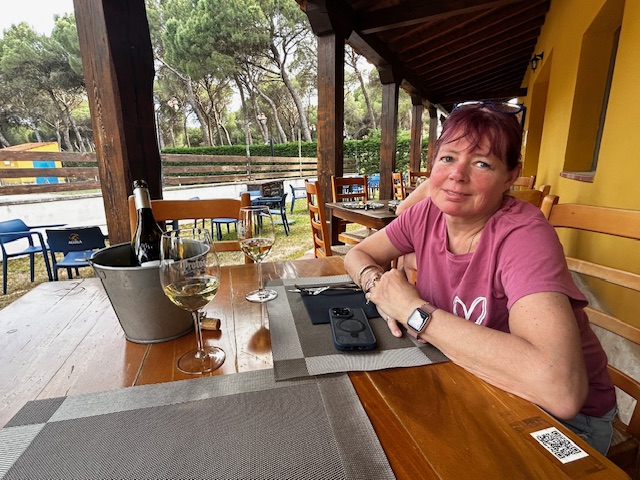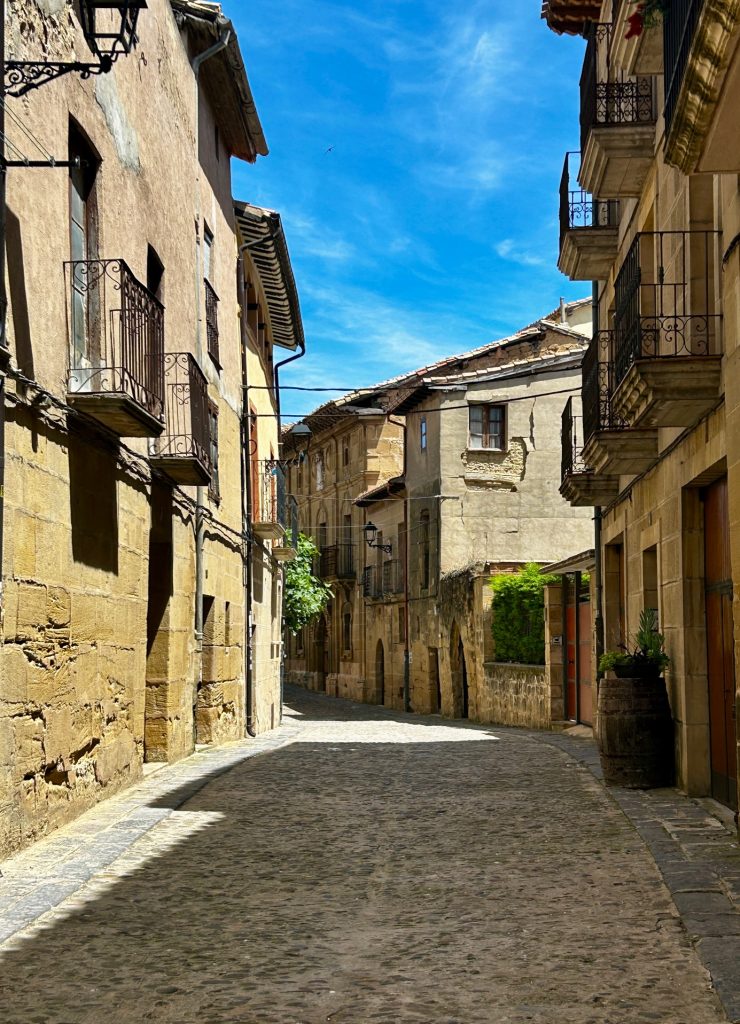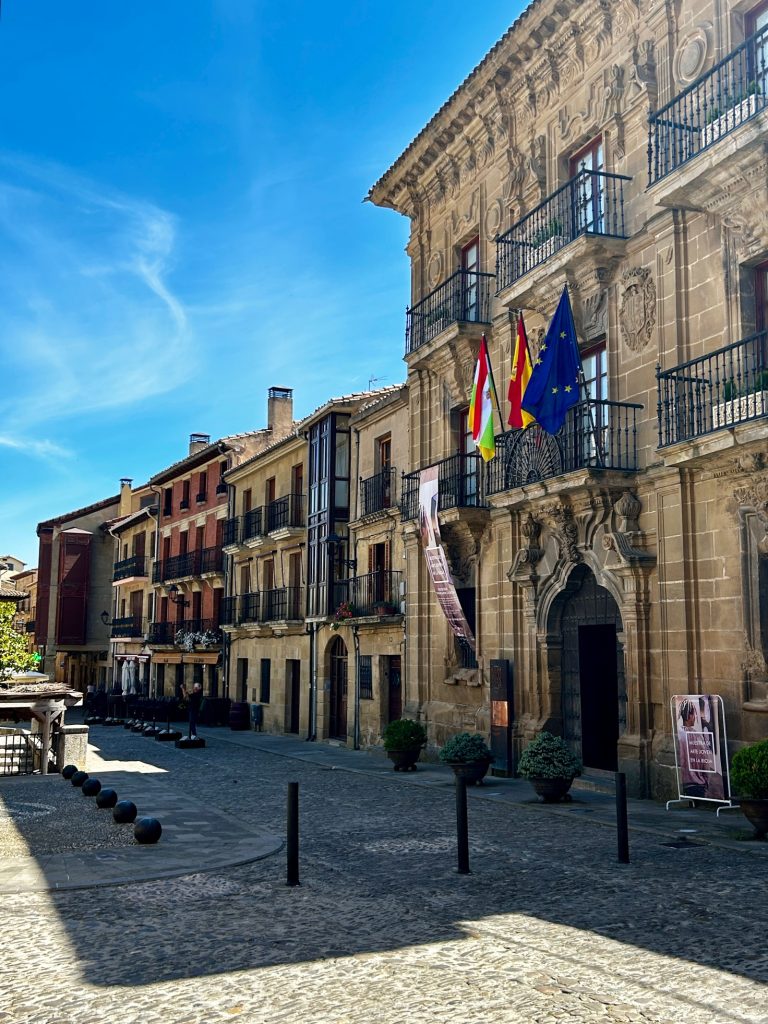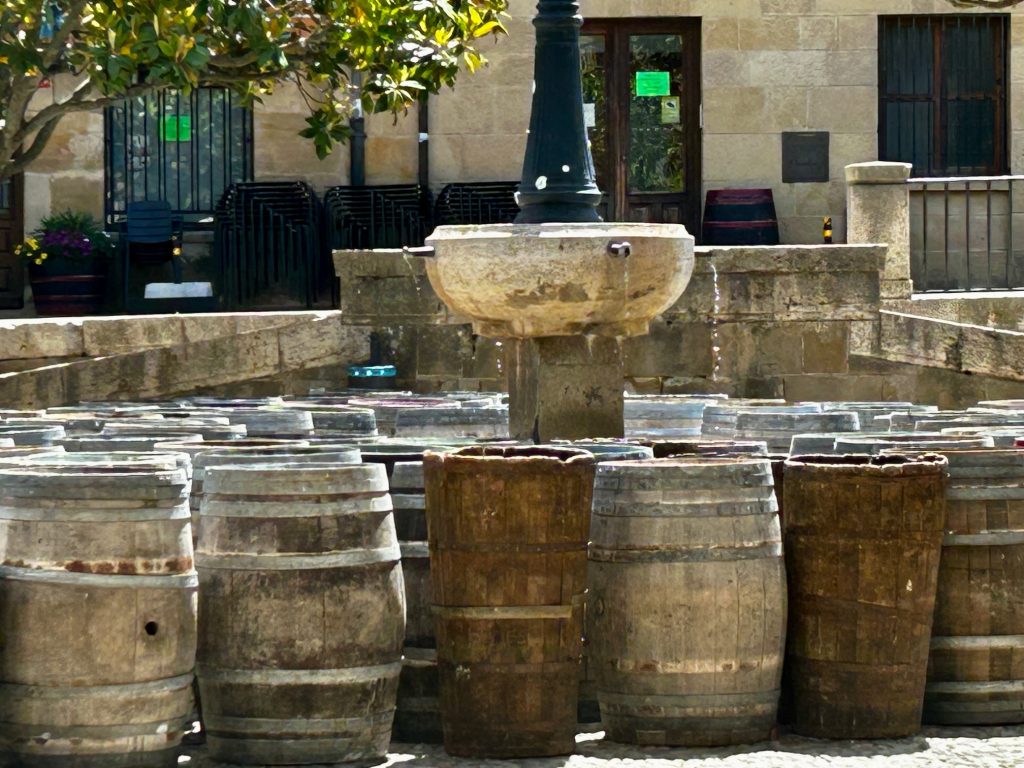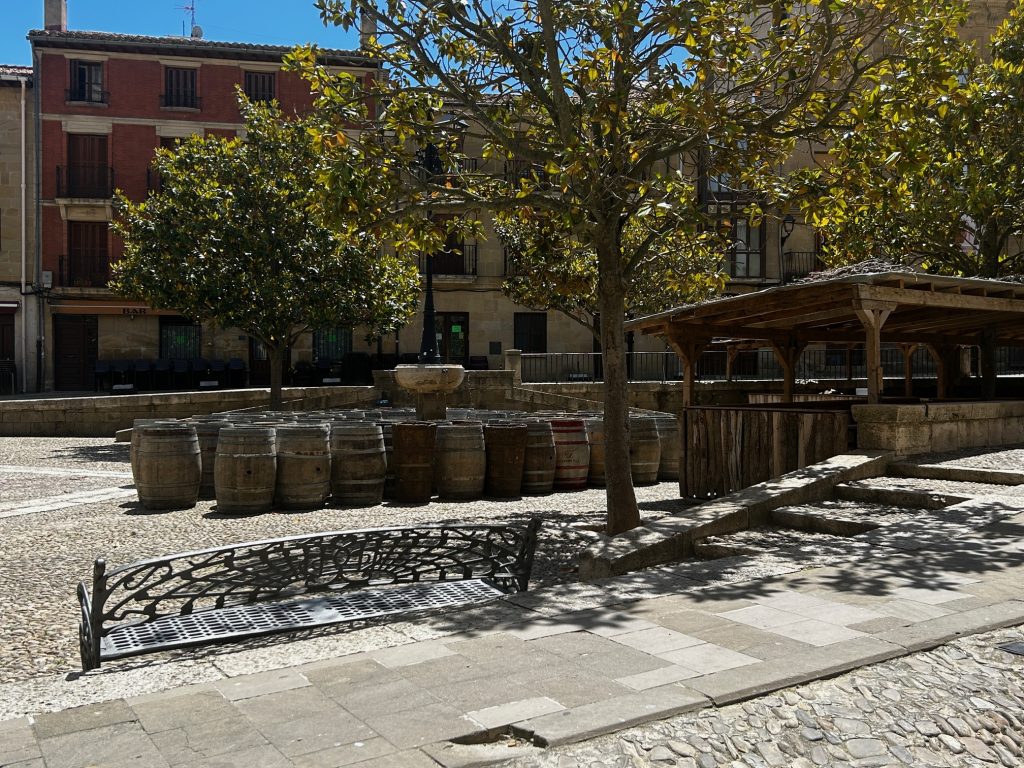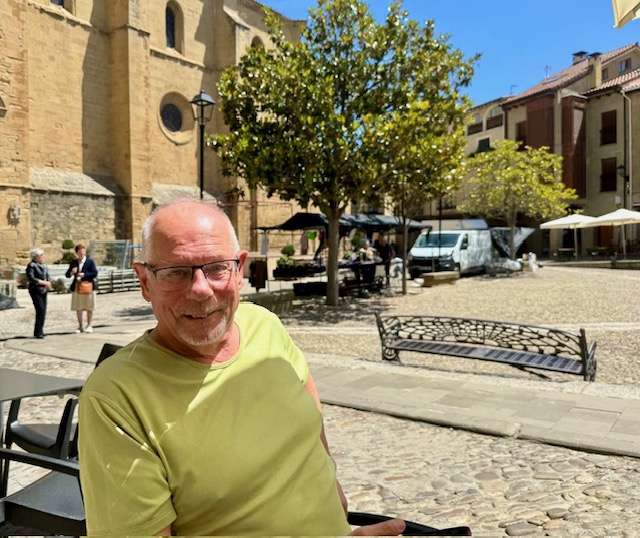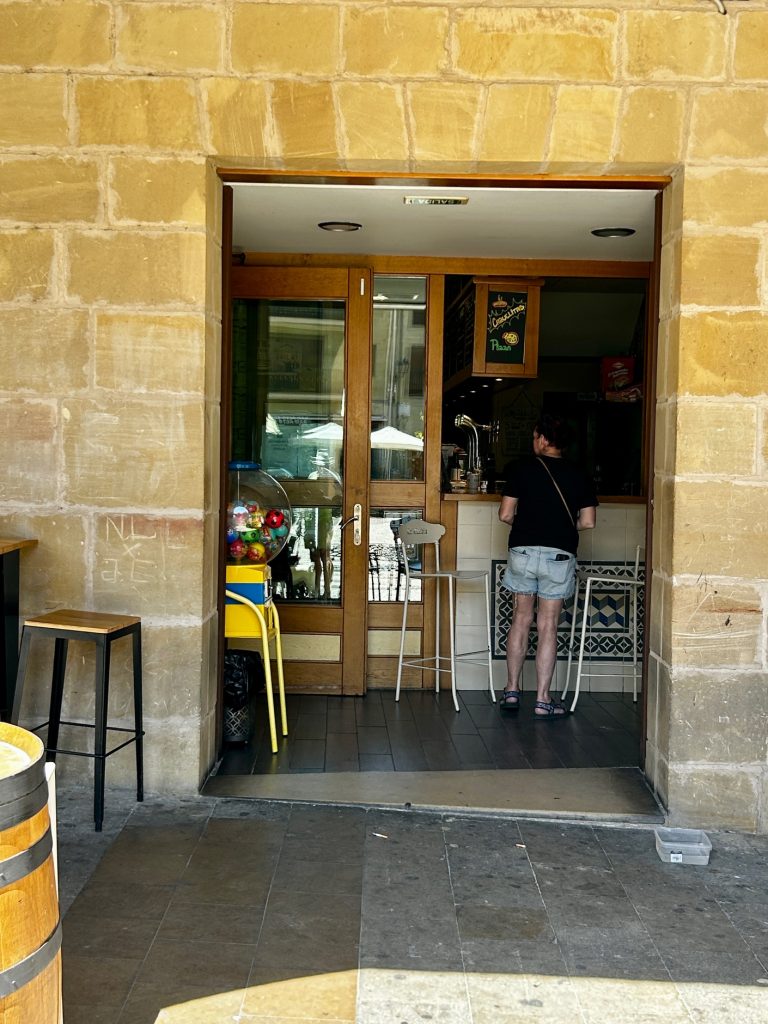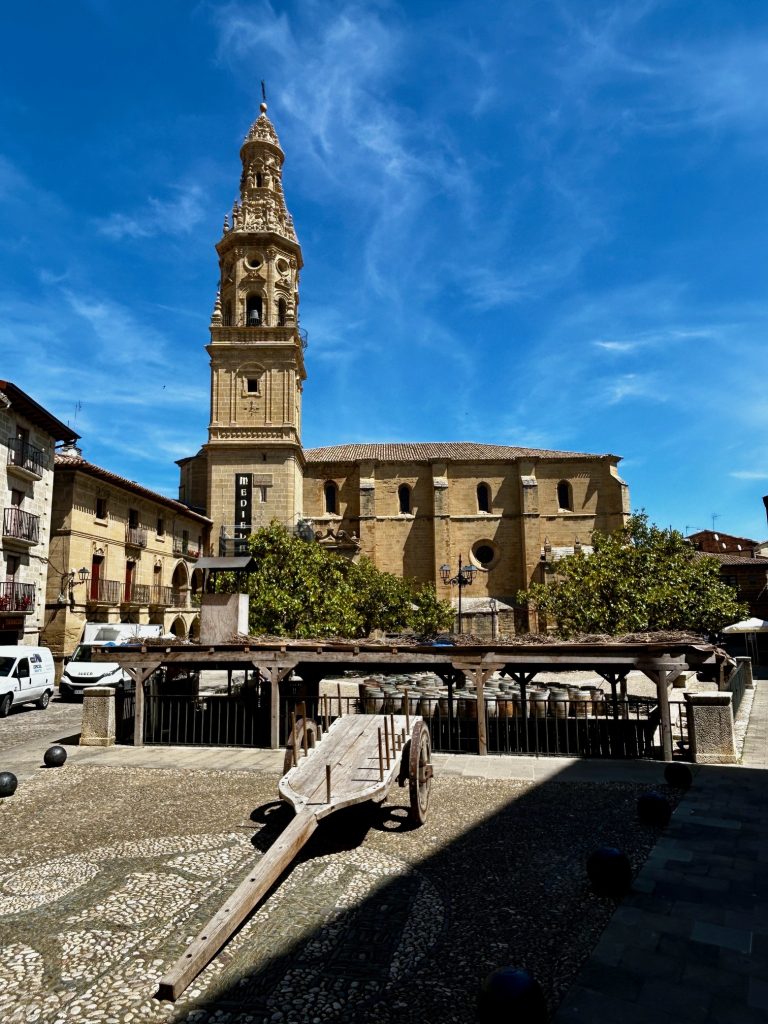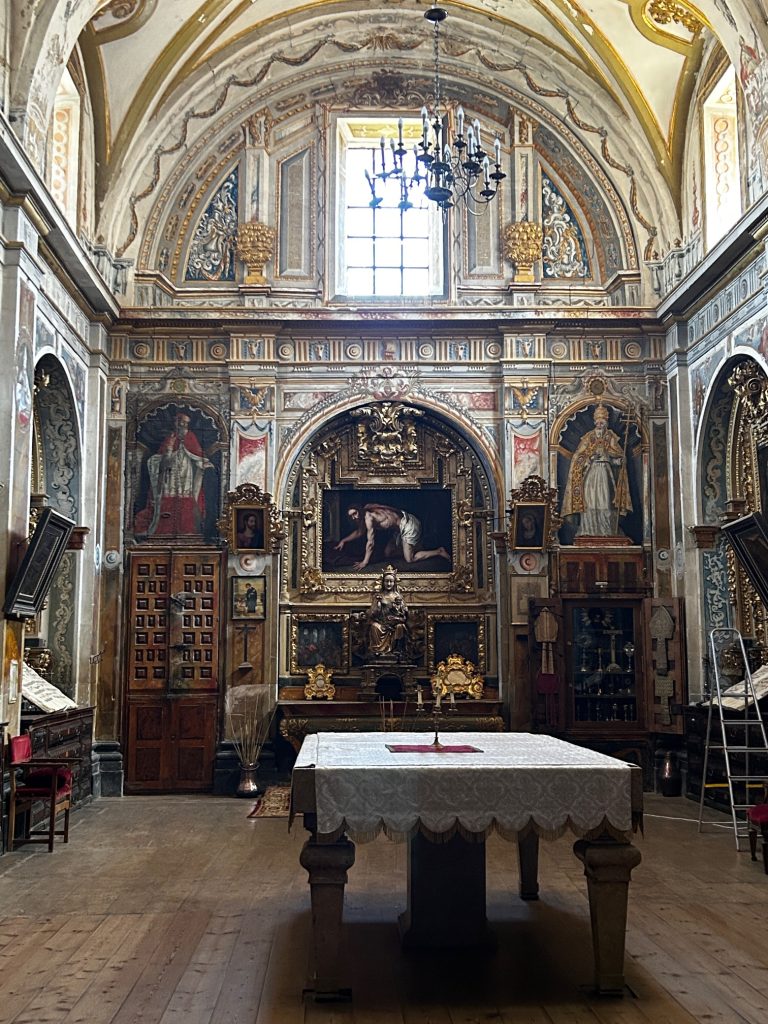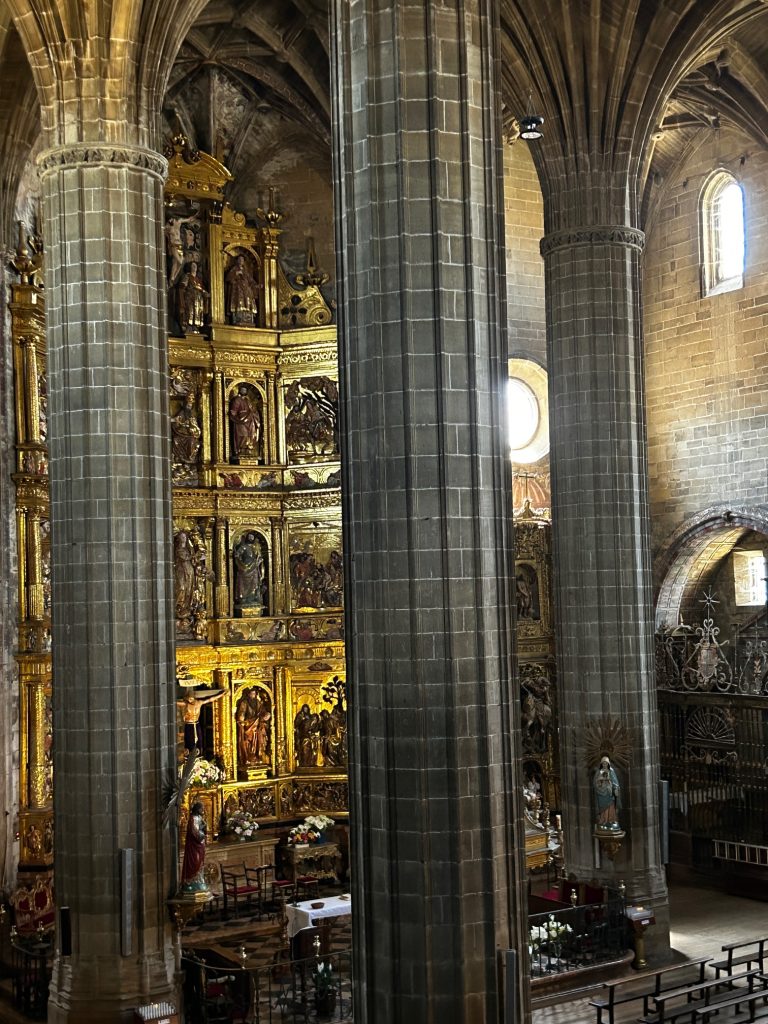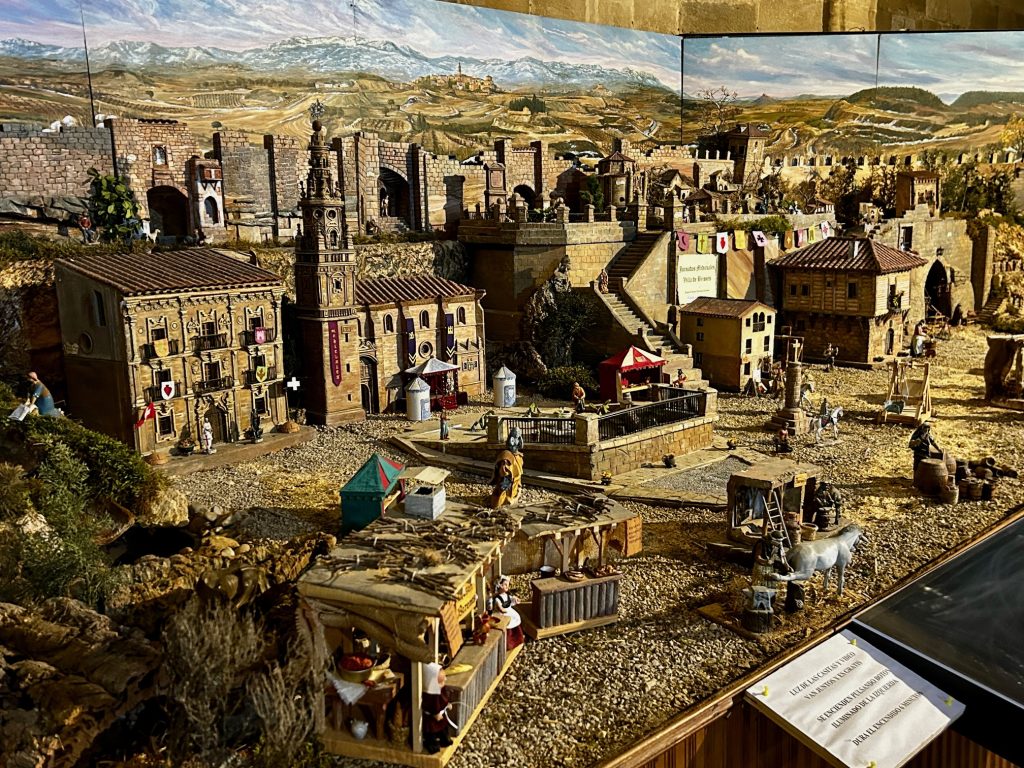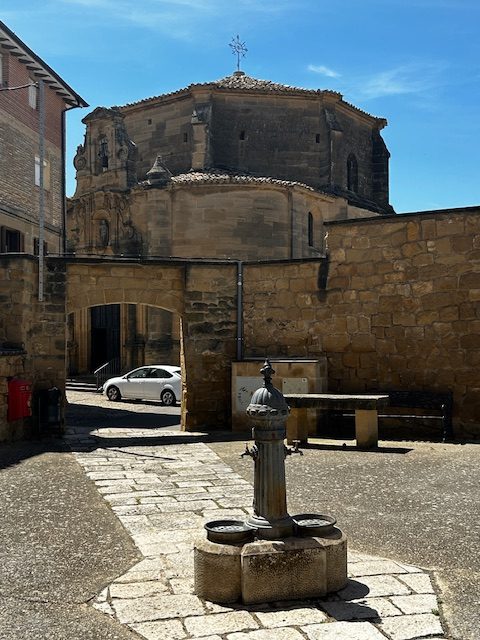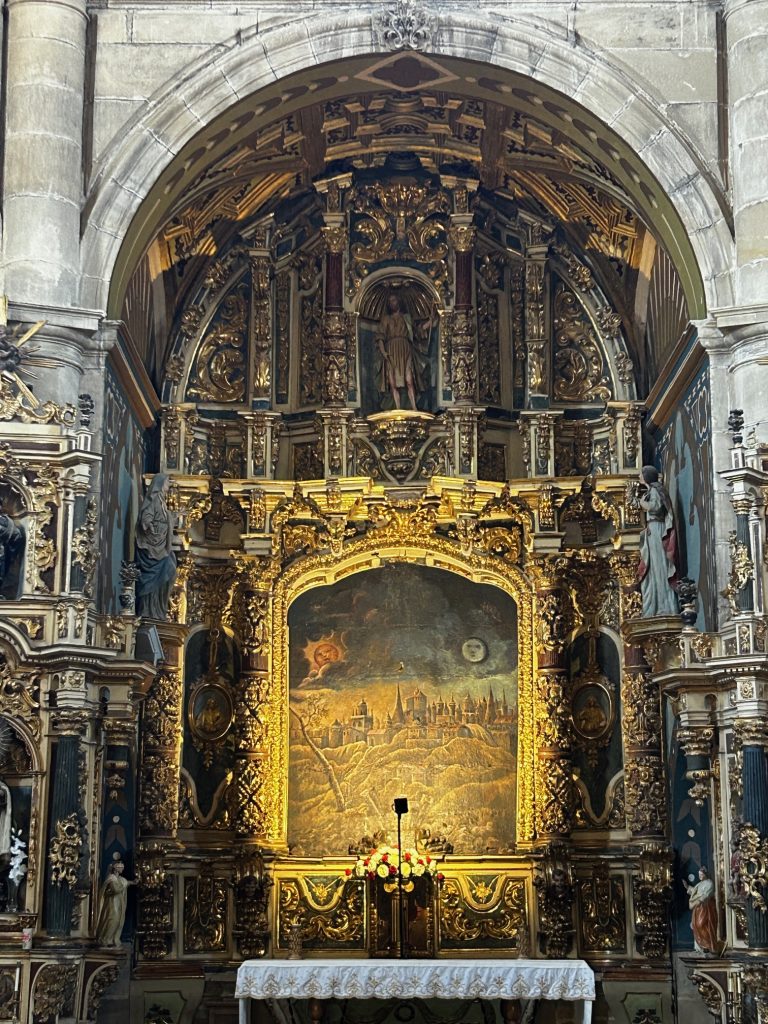This was our fourth time in Haro. It is one of Vanya’s favourite places in Spain. I’ve always been rather ambivalent about the town but I thoroughly enjoyed this visit – I am definitely warming to the place. It isn’t very large (just 12,000 people) but there is a real energy about it.
After settling in at Campingred de Haro (I think Campingred may have taken this site over quite recently) we made our way up to the centro historico and the Plaza de la Paz. We thought to secure a table in one of the old town pinchos bars and watch Spain play Croatia in their opening game of the UEFA European Championship finals.
Imagine our surprise when upon arrival in the square at about 7pm we found some kind of festival in full swing. We had arrived in time for the Haro Civil War Festival with three brass bands competing to see who could play the loudest and longest and attract the most dancers. Honestly, the town was more interested in the band war than the national football team’s opening game. As the evening progressed and increasing numbers of people arrived to enjoy the festival, the town became louder and more rambunctious with everybody enjoying the revelry (or should I say rivalry?) but; for all that the place was never threatening – everybody remained in good humour as they drank, danced and followed the bands as they weaved their raucous way around the old town.
Needless to say, we had a late night. We managed to eat a little and drink a lot and we even managed to catch a few minutes of the football. Spain won 3-0 but very few of the locals in Haro seemed to care.
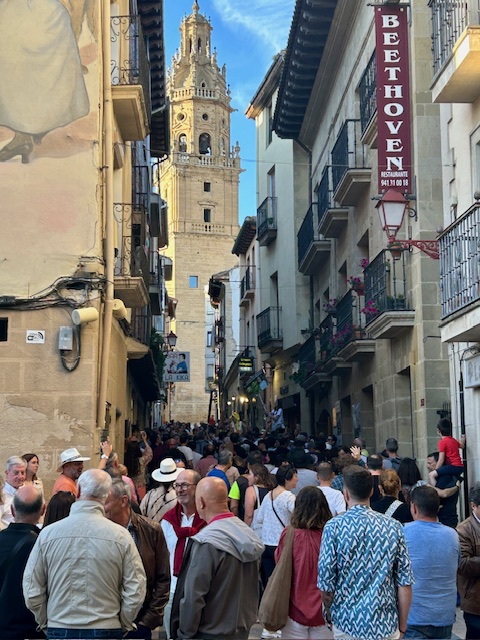

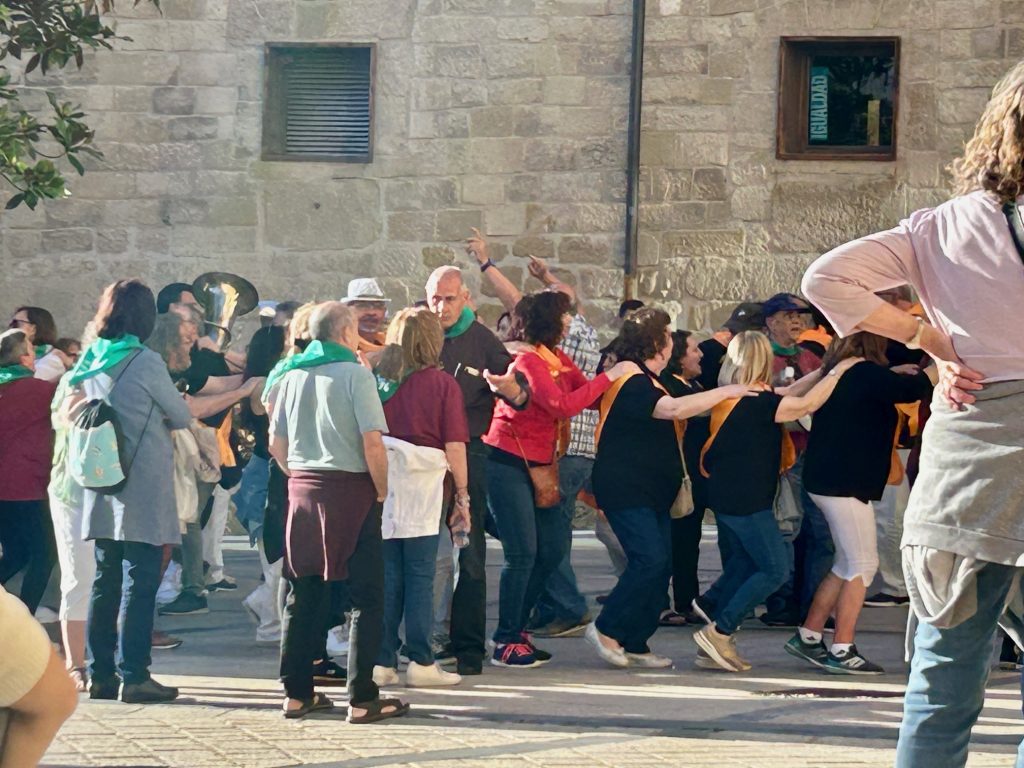

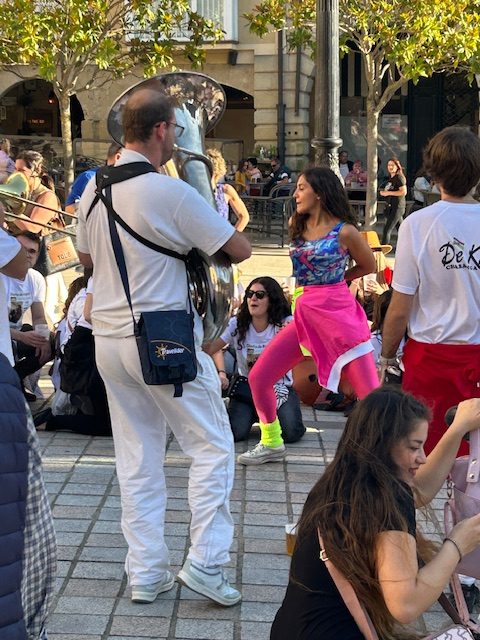

I was up early the next morning. It was a Sunday. I knew it was Sunday because the local Mercadona (the nearest you will get to a Waitrose in Spain) was closed but; no matter, I required only bread and milk (easily available in Haro even on a Sunday morning) and I was left with sufficient time to revisit the Basilica de Nuestra de la Vega just the other side of the Vega Gardens. I took few photos during this visit (see the blog posted during Tour 7 if it’s photos you want). It was enough just to sit for a moment and enjoy the peace and splendour of this magnificent church.
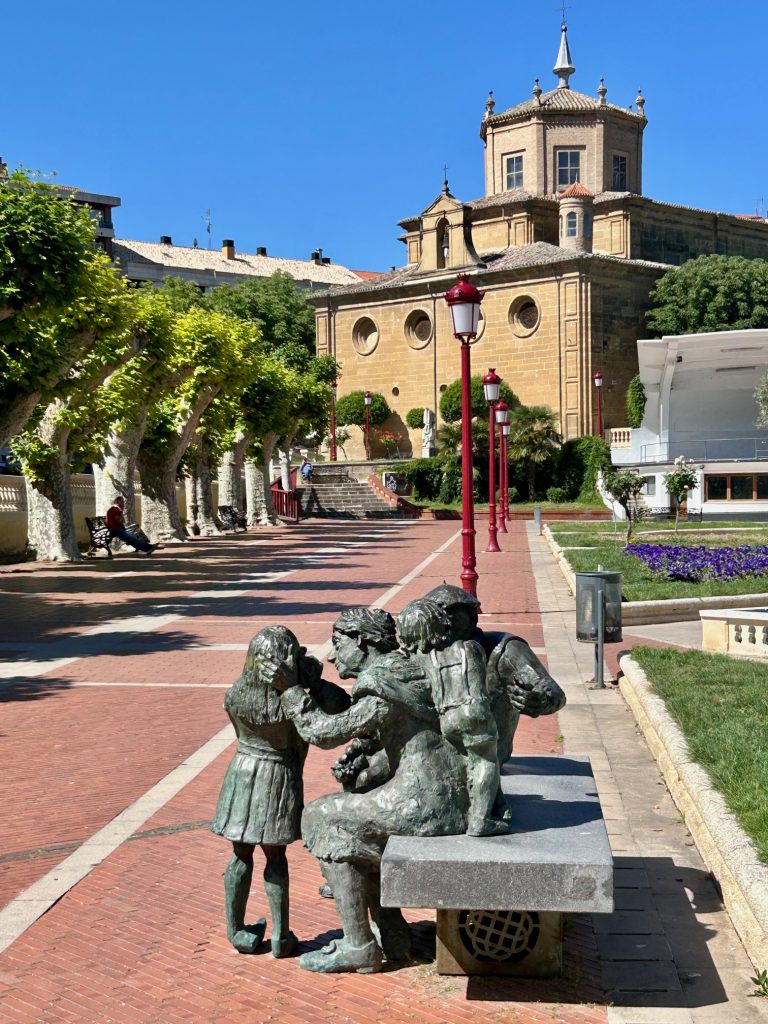
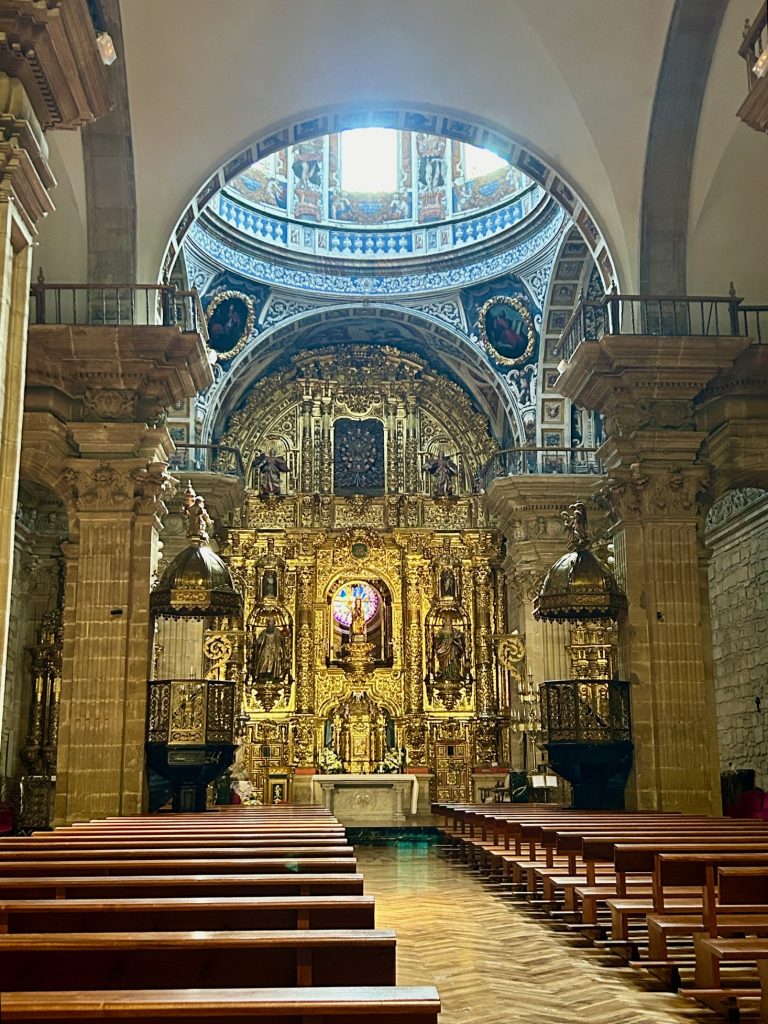
After a late breakfast we spent what remained of the day down at the Barrio de la Estacion. This part of Haro is where many of the larger Bodegas are located. It is named after it’s railway station which was built in the late 19th century to connect Haro with the Bordeaux wine trade. I should explain that in the late 18th century French vineyards were devastated by a phylloxera epidemic and looked to La Rioja to supply wine. Haro rose to the occasion with the bodegas in the barrio being built not long after.
We started at Bodega Balbainas, that’s Vanya’s favourite, because of their sparkling white wine (Lumen). Bodega Balbainas were the first to establish themselves in the Barrio de la Estacion and first to produce sparkling wine in the whole of La Rioja (that was in 1913). It came as no surprise therefore to learn they are also the biggest wine producer in Haro with 250 hectares of vineyards.
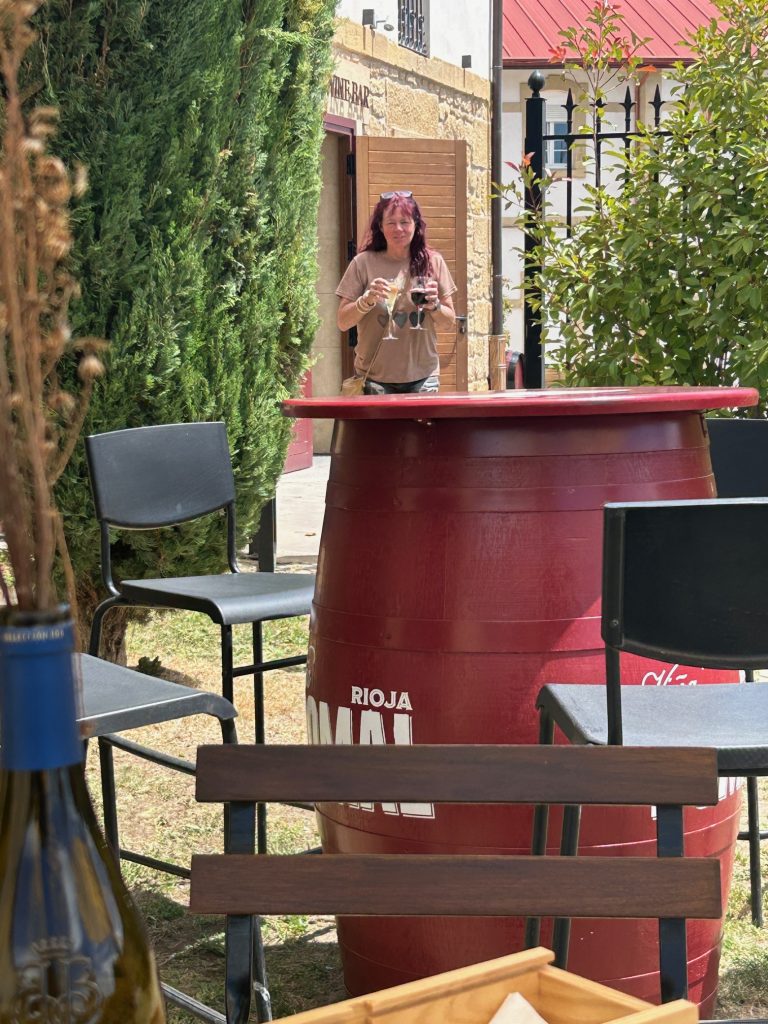

Most of our time that day, however, was spent in my favourite bodega in Haro, the Muga. They produce some good white wines (there is absolutely nothing wrong with white Rioja) but it is their reds I favour most, particularly their Seleccion Especiale. It costs a little more but it is truly excellent. We spent a great afternoon on the Muga courtyard nibbling away at the local cheeses and sampling some fine wines. Vanya might well favour Balbainas over the Muga but, going forward, she’ll be more than happy at the thought of another such afternoon at Muga.
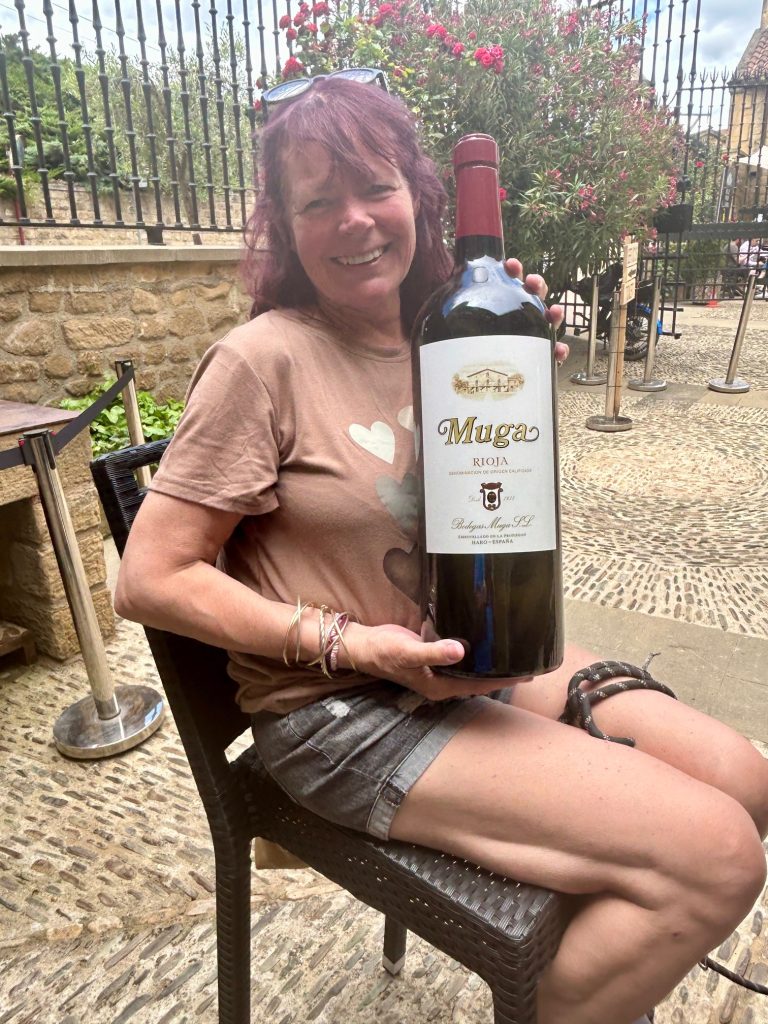
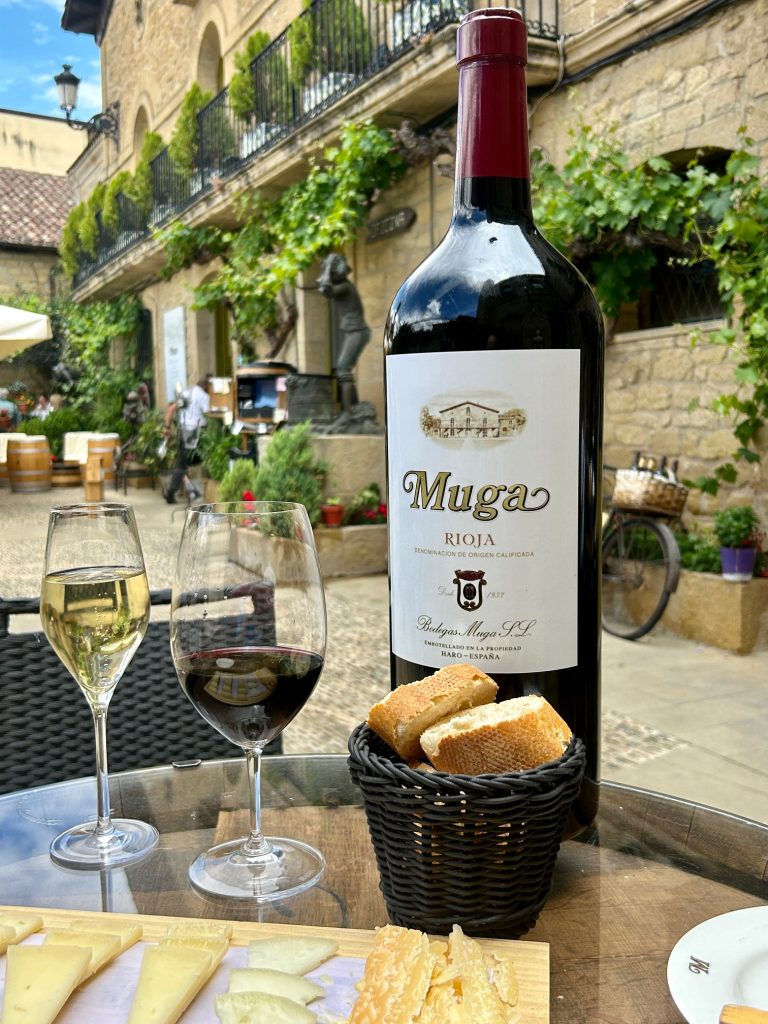
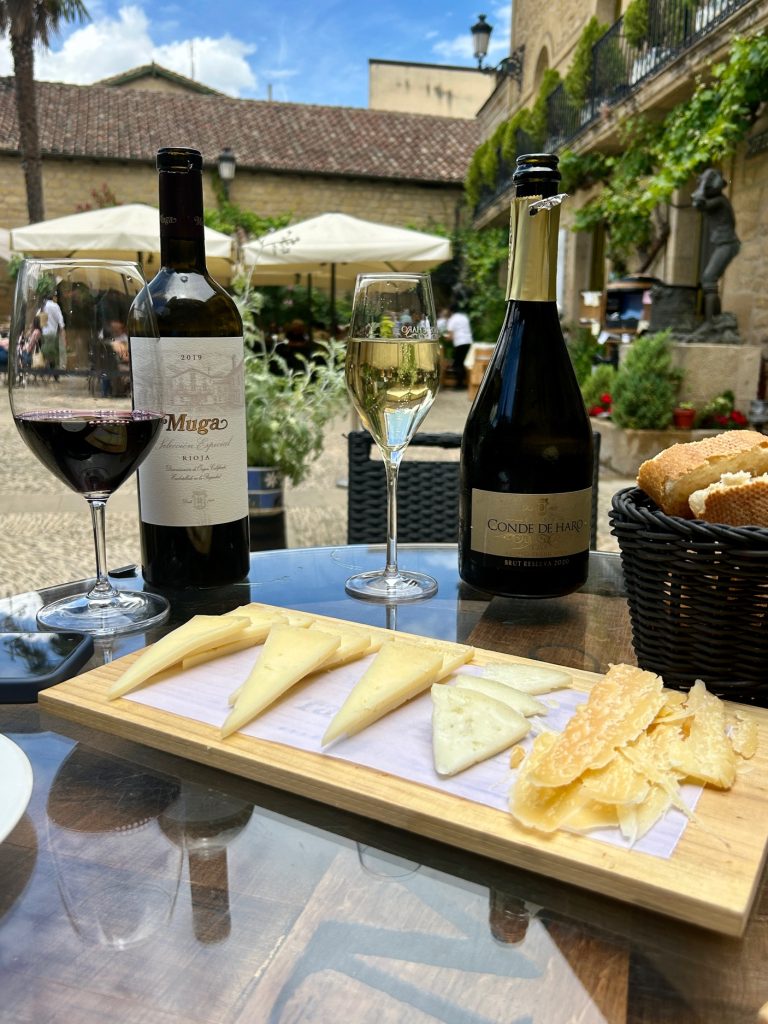
That night, still very tipsy, we made our way back to a bar on the Plaza de la Paz to watch another football match. This time it was England’s first game in the finals of the European Championships and they were drawn to play Serbia. Thank goodness for the wine because it was an awful game which England only narrowly won (1-0). Still, with the other two teams in their group drawing, they are currently top the group.
We would have liked to stay on in Haro not least because on June 29 the town holds it’s annual wine fight against the neighbouring town of Miranda de Ebro but, sadly, we have to be back in the UK by 1 July. I posted some detail of the wine battle on this website during an earlier visit to Haro (see Tour 6) but, in a nutshell, all those wishing to participate in the event dress completely in white except for a red sash and then throw buckets of red wine at the opposition (although you can also drink the wine). The wine is provided free by the local bodegas in a number of lorries which each contain as much as 20,000 litres of wine. As the song by Hot Chocolate goes – Everyone is a winner, baby!
Not sure where our next stop will be. We’ll find out tomorrow.

